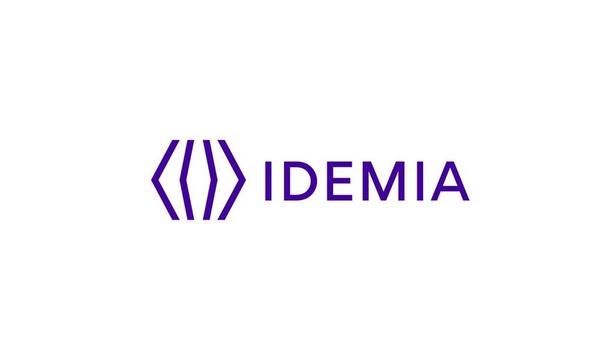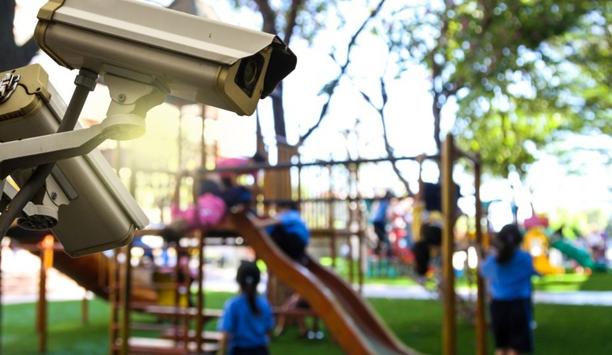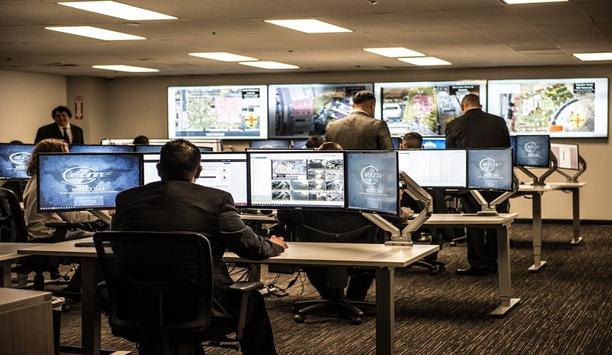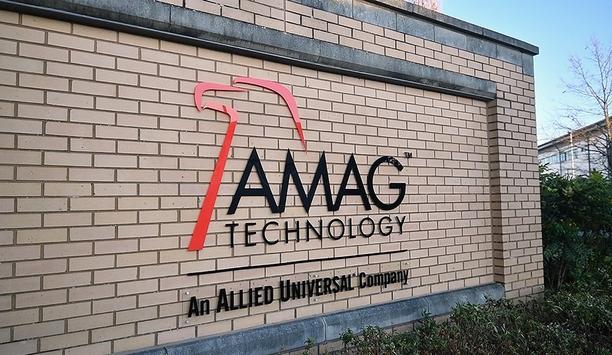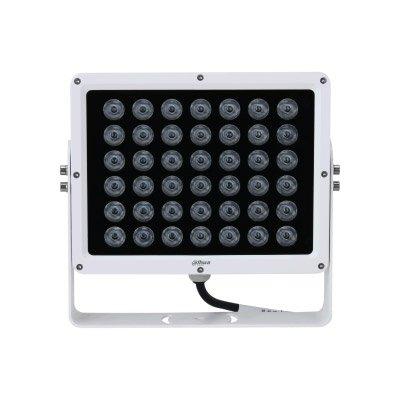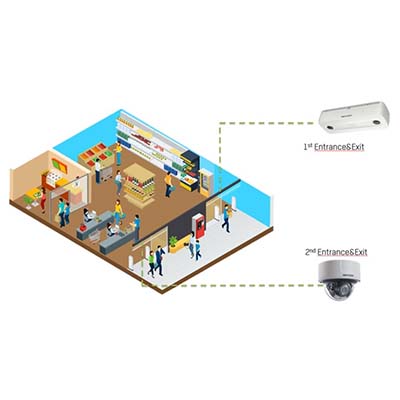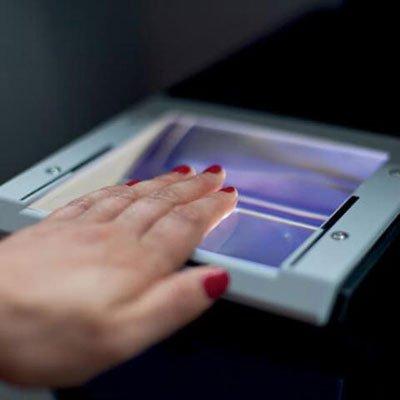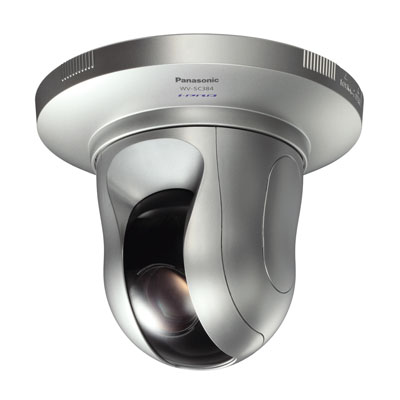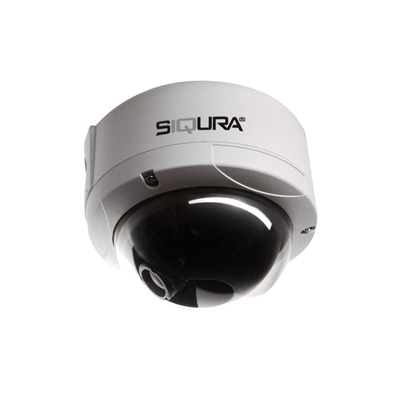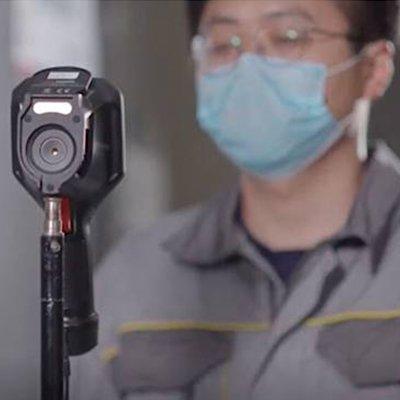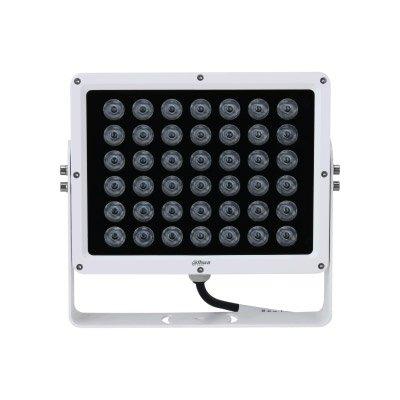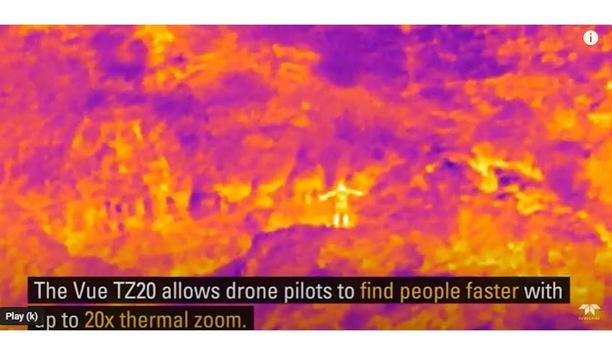Public security
i-PRO Co., Ltd. (formerly Panasonic Security), a pioneer in professional security and public safety solutions, announces that from October 1, 2025, the Saga Factory (Tosu City, Saga Prefecture, Japan) will be positioned and operated as the core factory, starting with the production of security cameras. They will expand the system to supply high-quality "Made in Japan" products from Japan to the world. Production of security cameras The monthly production volume will start at approximately 14,...
AITX’s Robotic Assistance Devices (RAD) has deployed its ROAMEO Gen 4 mobile security robot to the Downtown St. Louis Community Improvement District (CID) in anticipation of the NCAA Men’s Frozen Four Championship, taking place April 10 and 12. ROAMEO’s presence will enhance safety and engagement throughout the heart of the city during this nationally spotlighted event, offering an innovative layer of real-time situational awareness and autonomous patrol. RAD’s interact...
Iris ID, the global pioneer in iris recognition technology, will be demonstrating their latest breakthrough contactless biometric identity authentication solutions at ISC West 2025 in booth #28057. Visitors will have the opportunity to experience the company's latest identity portfolio of products, including the advanced IrisAccess® iA1000 and IrisTime® iT100 designed for easy integration into security and time management ecosystems. Time management ecosystems "As security threats gr...
Security Industry Authority brought together senior pioneers from the 30 largest private security businesses to discuss labour exploitation. This summit followed a similar event in December 2024, at which the 20 largest businesses were represented. These events form part of Operation EMPOWER, which is the SIA’s response to labour exploitation. EMPOWER involves a dedicated multi-disciplinary team that includes intelligence specialists and criminal investigators working closely with HM...
U.S. Senator Catherine Cortez Masto (D-Nev.) re-introduced two bipartisan bills to support rural water systems. The Rural Water System Disaster Preparedness and Assistance Act, co-led by Senator Cindy Hyde-Smith (R-Miss.), would help rural water and wastewater utilities prepare and become more resilient in the face of natural disasters and other extreme weather events. The Cybersecurity for Rural Water Systems Act Cybersecurity for Rural Water Systems Act would update technical assistance opp...
The UK’s Security & Policing 2025 expo opened in Hampshire, bringing together government officials, law enforcement agencies and policing-tech vendors to discuss the latest developments in public safety and security. This year the event will focus on counter-terrorism, border security, cyber threats and the use of AI in policing. Tech companies to watch Thales will showcase its AI-driven border security solutions, which are designed to support identity verification processes a...
News
i-PRO Americas Inc. (formerly Panasonic Security), a global pioneer in professional security solutions for security and public safety announced that it has been awarded E&I Cooperative Services Contract #EI00470. This agreement provides over 6,000 member institutions of E&I Cooperative Services with streamlined access to i-PRO’s advanced security systems and services through a cost-effective and statutory-compliant procurement process. Cost savings, efficiency gains E&I Cooperative Services, the only member-owned, non-profit sourcing cooperative exclusively focused on serving the education sector, offers its members significant cost savings, efficiency gains, and risk mitigation strategies. Through this competitively bid contract, educational institutions can simplify their acquisition of mission-critical security solutions without the need for additional RFPs. Campus safety Institutions gain access to expert guidance throughout the purchasing process, ensuring seamless procurement The contract enables member institutions to leverage i-PRO’s innovative product portfolio, including a wide range of powerful edge-processing AI cameras, i-PRO’s Video Insight VMS (Video Management System) with MonitorCast access control, and tailored third-party solutions. With live support from i-PRO’s dedicated government contracts team, institutions gain access to expert guidance throughout the purchasing process, ensuring seamless procurement and deployment of security technologies that enhance campus safety and operational efficiency. Saves time and costs “i-PRO Americas understands that every organization has its unique challenges and limited resources when it comes to acquiring mission-critical technology,” said Dave Ovesny, Director of Strategic Capture, Contracts & Bids at i-PRO Americas. “We certainly recognize the value of E&I Cooperative Services’ mission to simplify the procurement process, saving time and creating cost savings for its members through the EI00255-2023RFP contract award to i-PRO Americas for alarm systems, hardware, services, monitoring & access control solutions." The contract also offers several key benefits to educational procurement and facilities teams, including time and cost savings, direct access to a wide range of award-winning security products, and the ability to meet strategic goals with minimal disruption.
IDEMIA Public Security North America, the provider of secure and trusted biometric-based solutions, has announced the launch of their newest product, STORM LP-X, an all-in-one latent print software to encode latent prints, submit searches, and compare prints, allowing examiners to quickly and easily search latent prints against their state system and the Next Generation Identification (NGI) system, a database of biometric and criminal history information for individuals developed by the FBI’s Criminal Justice Information Services (CJIS) Division. STORM LP-X IDEMIA’s STORM LP-X is a next-generation, cloud-native, Software-as-a-Service (SaaS) system that provides a complete and easy-to-use method to submit latent print searches to a state’s Automated Biometric Identification System (ABIS), a software system that stores and matches biometric data to identify individuals, in addition to the FBI’s NGI system. IDEMIA’s STORM LP-X has an intuitive, user-centric design that incorporates the principles of the ACE-V method Using the same revolutionary user interface as IDEMIA’s STORM ABIS, IDEMIA’s STORM LP-X has an intuitive, user-centric design that incorporates the principles of the ACE-V (Analysis, Comparison, Evaluation, Verification) method used by forensic examiners to analyse and compare fingerprints, and the GYRO (Green, Yellow, Red and Orange System) documentation system, which is focused on transparent fingerprint documentation. An accessible, and innovative solution "STORM LP-X provides latent print examiners with an efficient, accessible, and innovative solution to search and match latent prints to help identify suspects," said Doug Harvey, CTO, of IDEMIA Public Security North America. "This newest product truly exemplifies our mission of unlocking the world and making it safer by providing examiners with innovative, up-to-date, and efficient technology for forensic and criminal investigations, when every second counts." Web-based solution Since STORM LP-X is a web-based solution, latent print examiners no longer need to transfer images STORM LP-X is a perfect fit for law enforcement agencies that are looking for an alternative to using the latent print workstation from their state’s ABIS vendor or using Universal Latent Workstation (ULW) software. Since STORM LP-X is a web-based solution, latent print examiners no longer need to transfer images to a different PC or share a dedicated workstation with other members of the unit. Key features The solution also offers innovative and accessible features, such as: Intuitive user interface designed by examiners for examiners. Drag-and-drop image upload. Accurate auto-encode. Latent print quality map. Analysis documentation including GYRO. Side-by-side comparison of search candidates or manual comparisons. Submit searches to the state ABIS and NGI. Submit and receive EBTS-compliant transactions. Work from anywhere – office or crime scene.
IDEMIA Public Security, the provider of secure and trusted biometric-based solutions, proudly announces its top-ranking results in the Department of Homeland Security’s (DHS) Science and Technology Directorate (S&T) Remote Identity Validation Technology Demonstration (RIVTD). IDEMIA emerged as a clear pioneer in Track 3: Liveness Detection, showcasing unparalleled biometric accuracy and fairness. RIVTD series The RIVTD series is a rigorous evaluation designed to challenge and advance the capabilities of remote identity verification technologies and assess their effectiveness. IDEMIA’s #1 ranking in track 3 among the participants underscores yet again its commitment to developing cutting-edge biometric algorithms that excel in real-world scenarios, secure against sophisticated attacks, and meet the highest standards of fairness. User experience and accuracy These results set a new benchmark for the biometric industry, and emphasise fairness IDEMIA achieved flawless results in liveness detection, ensuring zero successful attacks while consistently reaching the demanding user experience satisfaction and delivering superior accuracy across demographic groups including gender, race, and skin tone. These results set a new benchmark for the biometric industry, and emphasise fairness, a global legal and ethical requirement and a crucial standard in biometrics and algorithms. The moral and ethical imperative "Our leadership in the RIVTD evaluation reflects our unwavering focus on creating technologies that not only deliver accuracy but also operate equitably across diverse populations," said Vincent Bouatou, Chief Technology Officer, IDEMIA Public Security. "In a rapidly evolving regulatory landscape, fairness is becoming a legal necessity on top of a moral and ethical imperative." Compliance, inclusivity, and cost-effectiveness For businesses and governments, selecting a biometric technology provider is no longer just about performance – it’s about compliance, inclusivity, and cost-effectiveness. Choosing an algorithm with demonstrated fairness and accuracy ensures alignment with emerging regulations, avoiding the risks, such as legal challenges and reputational harm, that is associated with non-compliant vendors. Operational efficiency A missed match costs organisations not just time, but money, whether in lost opportunities Beyond fairness, biometric accuracy translates directly into operational efficiency. A missed match costs organisations not just time, but money, whether in lost opportunities or additional resources for manual verification. Performance, and impact By selecting IDEMIA, organisations gain more than just technology and innovation – they secure a partnership grounded in trust, the highest levels of security, and proven results in accuracy, fairness, and user experience. IDEMIA delivers solutions that lead the market in security, performance, and impact, whether it’s enhancing security for law enforcement, streamlining identity verification for enterprises, or ensuring compliance in sensitive industries.
IDEMIA Public Security, the pioneering provider of secure and trusted biometric-based solutions, and Tahakom, the Saudi Technology and Security Comprehensive Control Company, are expanding their strategic partnership through the signing of an extensive agreement to develop and implement local sourcing and foster continued innovation to ensure safer roads in the Kingdom. Expertise and capabilities within AI IDEMIA and Tahakom’s expanded alliance aims to develop and execute local initiatives The new agreement marks a turning point in enhancing road safety in the Kingdom and moving a step closer to Saudi Vision 2030, which includes a significant focus on improving road safety, but also on making the country a global investment powerhouse through the development of local activities. IDEMIA and Tahakom’s expanded collaboration aims to develop and implement local initiatives focused on sourcing, assembling, and servicing, in addition to leveraging each other’s expertise and capabilities within AI and research and development. Three core subjects The signed agreement focuses on three core subjects: Assembly: With Tahakom’s commitment to local sourcing, IDEMIA will source components and services for their products from Saudi Arabia. In support of this, IDEMIA will establish a new entity, IDEMIA Road Safety Limited – Saudi Arabia, which will be specialised in assembling Road Safety products in Saudi Arabia and reinforce the use of local content by engaging with local suppliers and partners in the Kingdom whenever possible. Artificial Intelligence and Research & Development (R&D): IDEMIA’s R&D Team and Tahakom’s AI team will set up multiple workshops throughout the year to collaborate and share ideas surrounding AI and R&D advancements. Transfer of Knowledge: IDEMIA and Tahakom will focus on bringing experts around the globe to set up sessions around IDEMIA’s products and technologies and openly conduct and offer these sessions to Saudi Arabian citizens. IDEMIA’s dedication to ensure safer roads "We are thrilled to expand our partnership with Tahakom and support their commitment to local sourcing in Saudi Arabia. Together we continue to develop and implement initiatives that will drive maximum benefit and impact on our communities, while enhancing operational efficiency and sustainability." "This agreement is not only a testament to Tahakom and IDEMIA’s dedication to ensure safer roads in the Kingdom, but also to our commitment to leveraging local expertise and resources and aligning to the Saudi Vision 2030 set by the Kingdom," Mazen Hamadallah, SVP, Road Safety, IDEMIA Public Security. Other potential areas As IDEMIA and Tahakom work closely together on this new initiative, they aim to set up a program to improve local content while working on product localisation, strengthening the local workforce, and sharing knowledge and research on local content. They will also be exploring other potential areas to expand into in the future.
IDEMIA Public Security North America, the pioneering provider of secure and trusted biometric-based solutions, in partnership with the West Virginia Division of Motor Vehicles (DMV) and Samsung, is proud to announce the launch of the West Virginia Mobile ID to Samsung Wallet. West Virginia Residents can now securely store their mobile ID in their Samsung Wallet on a Samsung Galaxy device and use the credential to verify their identities directly from their mobile phones at TSA checkpoints at participating airports across the country. Elevated convenience and security The launch of West Virginia mobile ID in the Samsung Wallet will continue to streamline interactions with businesses and various service providers with elevated convenience and security. West Virginia residents can easily access their mobile ID in the Samsung Wallet by tapping their phone near the mobile ID reader or having the mobile ID reader scan the QR code. Adoption of mobile IDs West Virginians can also continue to access their mobile ID through the free West Virginia Mobile ID app West Virginians can also continue to access their mobile ID through the free West Virginia Mobile ID app, which IDEMIA built and rolled out for West Virginia in December 2024. "We’re excited to expand our partnership with Samsung and West Virginia to provide West Virgina residents with another convenient and trusted way to use their mobile ID credentials through the Samsung mobile wallet. This collaboration underscores IDEMIA’s commitment to accelerating the adoption of mobile IDs," said Rob Gardner, CEO, IDEMIA Civil Identity North America. Advance digital identity and solutions Gardner added: "Integrating identification credentials into everyday devices like smartphones is a game-changer for digital identity and security. It’s not just about convenience; it’s about empowering residents with seamless and secure access to their credentials whenever they need them. With security at the forefront, mobile IDs ensure personal information can only be accessed and shared if the user agrees to," The launch of mobile ID in West Virginia demonstrates IDEMIA’s ongoing efforts to advance digital identity and solutions for public and private sector use. Arizona, Delaware, Iowa, Mississippi, and New York are additional states that have rolled out IDEMIA’s mobile ID technology.
Frequentis marks the debut of its LifeX3020 solution in Southeast Asia, improving emergency call handling and response coordination across three major centres and nationwide blue light agencies. This effort supports Malaysia’s Next Generation Emergency Services 999 (NG999) project, an upgrade designed to replace the current Malaysian Emergency Response System (MERS999). The initiative underscores Malaysia’s strong commitment to enhancing public safety across the nation. Responses from key agencies Frequentis will install innovative systems in three emergency response centres, the first deployment of its kind in Southeast Asia. These implementations will streamline emergency call handling, enabling quicker and more effective responses from key agencies such as police, fire, maritime, and civil defence services. “This project is an exciting opportunity to apply more than 25 years of expertise in public safety communications,” says Robert Nitsch, Vice President of Public Safety at Frequentis. “LifeX3020 is tailored to meet both current and future needs, ensuring that emergency services throughout Malaysia can provide fast, reliable, and efficient support to those in need.” Setup of 350 workstations Call takers will have improved tools to assess emergencies fast and direct help to the fit agencies The project involves the setup of 350 workstations across key emergency centres, backed by a robust infrastructure designed to enable rapid response across the nation. With the new platform, call takers will have enhanced tools to assess emergencies quickly and direct resources to the appropriate agencies without delay. This will significantly reduce response times, improving outcomes in critical situations. New benchmark for public safety technology Frequentis partners with local stakeholders to implement this large-scale project, which aligns with Malaysia’s broader efforts to strengthen national emergency services. The NG999 initiative sets a new benchmark for public safety technology in the region by integrating multiple services on a unified communication platform.
i-PRO Americas Inc. (formerly Panasonic Security), a global pioneer in professional security solutions for security and public safety announced that it has been awarded E&I Cooperative Services Contract #EI00470. This agreement provides over 6,000 member institutions of E&I Cooperative Services with streamlined access to i-PRO’s advanced security systems and services through a cost-effective and statutory-compliant procurement process. Cost savings, efficiency gains E&I Cooperative Services, the only member-owned, non-profit sourcing cooperative exclusively focused on serving the education sector, offers its members significant cost savings, efficiency gains, and risk mitigation strategies. Through this competitively bid contract, educational institutions can simplify their acquisition of mission-critical security solutions without the need for additional RFPs. Campus safety Institutions gain access to expert guidance throughout the purchasing process, ensuring seamless procurement The contract enables member institutions to leverage i-PRO’s innovative product portfolio, including a wide range of powerful edge-processing AI cameras, i-PRO’s Video Insight VMS (Video Management System) with MonitorCast access control, and tailored third-party solutions. With live support from i-PRO’s dedicated government contracts team, institutions gain access to expert guidance throughout the purchasing process, ensuring seamless procurement and deployment of security technologies that enhance campus safety and operational efficiency. Saves time and costs “i-PRO Americas understands that every organization has its unique challenges and limited resources when it comes to acquiring mission-critical technology,” said Dave Ovesny, Director of Strategic Capture, Contracts & Bids at i-PRO Americas. “We certainly recognize the value of E&I Cooperative Services’ mission to simplify the procurement process, saving time and creating cost savings for its members through the EI00255-2023RFP contract award to i-PRO Americas for alarm systems, hardware, services, monitoring & access control solutions." The contract also offers several key benefits to educational procurement and facilities teams, including time and cost savings, direct access to a wide range of award-winning security products, and the ability to meet strategic goals with minimal disruption.
IDEMIA Public Security North America, the provider of secure and trusted biometric-based solutions, has announced the launch of their newest product, STORM LP-X, an all-in-one latent print software to encode latent prints, submit searches, and compare prints, allowing examiners to quickly and easily search latent prints against their state system and the Next Generation Identification (NGI) system, a database of biometric and criminal history information for individuals developed by the FBI’s Criminal Justice Information Services (CJIS) Division. STORM LP-X IDEMIA’s STORM LP-X is a next-generation, cloud-native, Software-as-a-Service (SaaS) system that provides a complete and easy-to-use method to submit latent print searches to a state’s Automated Biometric Identification System (ABIS), a software system that stores and matches biometric data to identify individuals, in addition to the FBI’s NGI system. IDEMIA’s STORM LP-X has an intuitive, user-centric design that incorporates the principles of the ACE-V method Using the same revolutionary user interface as IDEMIA’s STORM ABIS, IDEMIA’s STORM LP-X has an intuitive, user-centric design that incorporates the principles of the ACE-V (Analysis, Comparison, Evaluation, Verification) method used by forensic examiners to analyse and compare fingerprints, and the GYRO (Green, Yellow, Red and Orange System) documentation system, which is focused on transparent fingerprint documentation. An accessible, and innovative solution "STORM LP-X provides latent print examiners with an efficient, accessible, and innovative solution to search and match latent prints to help identify suspects," said Doug Harvey, CTO, of IDEMIA Public Security North America. "This newest product truly exemplifies our mission of unlocking the world and making it safer by providing examiners with innovative, up-to-date, and efficient technology for forensic and criminal investigations, when every second counts." Web-based solution Since STORM LP-X is a web-based solution, latent print examiners no longer need to transfer images STORM LP-X is a perfect fit for law enforcement agencies that are looking for an alternative to using the latent print workstation from their state’s ABIS vendor or using Universal Latent Workstation (ULW) software. Since STORM LP-X is a web-based solution, latent print examiners no longer need to transfer images to a different PC or share a dedicated workstation with other members of the unit. Key features The solution also offers innovative and accessible features, such as: Intuitive user interface designed by examiners for examiners. Drag-and-drop image upload. Accurate auto-encode. Latent print quality map. Analysis documentation including GYRO. Side-by-side comparison of search candidates or manual comparisons. Submit searches to the state ABIS and NGI. Submit and receive EBTS-compliant transactions. Work from anywhere – office or crime scene.
IDEMIA Public Security, the provider of secure and trusted biometric-based solutions, proudly announces its top-ranking results in the Department of Homeland Security’s (DHS) Science and Technology Directorate (S&T) Remote Identity Validation Technology Demonstration (RIVTD). IDEMIA emerged as a clear pioneer in Track 3: Liveness Detection, showcasing unparalleled biometric accuracy and fairness. RIVTD series The RIVTD series is a rigorous evaluation designed to challenge and advance the capabilities of remote identity verification technologies and assess their effectiveness. IDEMIA’s #1 ranking in track 3 among the participants underscores yet again its commitment to developing cutting-edge biometric algorithms that excel in real-world scenarios, secure against sophisticated attacks, and meet the highest standards of fairness. User experience and accuracy These results set a new benchmark for the biometric industry, and emphasise fairness IDEMIA achieved flawless results in liveness detection, ensuring zero successful attacks while consistently reaching the demanding user experience satisfaction and delivering superior accuracy across demographic groups including gender, race, and skin tone. These results set a new benchmark for the biometric industry, and emphasise fairness, a global legal and ethical requirement and a crucial standard in biometrics and algorithms. The moral and ethical imperative "Our leadership in the RIVTD evaluation reflects our unwavering focus on creating technologies that not only deliver accuracy but also operate equitably across diverse populations," said Vincent Bouatou, Chief Technology Officer, IDEMIA Public Security. "In a rapidly evolving regulatory landscape, fairness is becoming a legal necessity on top of a moral and ethical imperative." Compliance, inclusivity, and cost-effectiveness For businesses and governments, selecting a biometric technology provider is no longer just about performance – it’s about compliance, inclusivity, and cost-effectiveness. Choosing an algorithm with demonstrated fairness and accuracy ensures alignment with emerging regulations, avoiding the risks, such as legal challenges and reputational harm, that is associated with non-compliant vendors. Operational efficiency A missed match costs organisations not just time, but money, whether in lost opportunities Beyond fairness, biometric accuracy translates directly into operational efficiency. A missed match costs organisations not just time, but money, whether in lost opportunities or additional resources for manual verification. Performance, and impact By selecting IDEMIA, organisations gain more than just technology and innovation – they secure a partnership grounded in trust, the highest levels of security, and proven results in accuracy, fairness, and user experience. IDEMIA delivers solutions that lead the market in security, performance, and impact, whether it’s enhancing security for law enforcement, streamlining identity verification for enterprises, or ensuring compliance in sensitive industries.
IDEMIA Public Security, the pioneering provider of secure and trusted biometric-based solutions, and Tahakom, the Saudi Technology and Security Comprehensive Control Company, are expanding their strategic partnership through the signing of an extensive agreement to develop and implement local sourcing and foster continued innovation to ensure safer roads in the Kingdom. Expertise and capabilities within AI IDEMIA and Tahakom’s expanded alliance aims to develop and execute local initiatives The new agreement marks a turning point in enhancing road safety in the Kingdom and moving a step closer to Saudi Vision 2030, which includes a significant focus on improving road safety, but also on making the country a global investment powerhouse through the development of local activities. IDEMIA and Tahakom’s expanded collaboration aims to develop and implement local initiatives focused on sourcing, assembling, and servicing, in addition to leveraging each other’s expertise and capabilities within AI and research and development. Three core subjects The signed agreement focuses on three core subjects: Assembly: With Tahakom’s commitment to local sourcing, IDEMIA will source components and services for their products from Saudi Arabia. In support of this, IDEMIA will establish a new entity, IDEMIA Road Safety Limited – Saudi Arabia, which will be specialised in assembling Road Safety products in Saudi Arabia and reinforce the use of local content by engaging with local suppliers and partners in the Kingdom whenever possible. Artificial Intelligence and Research & Development (R&D): IDEMIA’s R&D Team and Tahakom’s AI team will set up multiple workshops throughout the year to collaborate and share ideas surrounding AI and R&D advancements. Transfer of Knowledge: IDEMIA and Tahakom will focus on bringing experts around the globe to set up sessions around IDEMIA’s products and technologies and openly conduct and offer these sessions to Saudi Arabian citizens. IDEMIA’s dedication to ensure safer roads "We are thrilled to expand our partnership with Tahakom and support their commitment to local sourcing in Saudi Arabia. Together we continue to develop and implement initiatives that will drive maximum benefit and impact on our communities, while enhancing operational efficiency and sustainability." "This agreement is not only a testament to Tahakom and IDEMIA’s dedication to ensure safer roads in the Kingdom, but also to our commitment to leveraging local expertise and resources and aligning to the Saudi Vision 2030 set by the Kingdom," Mazen Hamadallah, SVP, Road Safety, IDEMIA Public Security. Other potential areas As IDEMIA and Tahakom work closely together on this new initiative, they aim to set up a program to improve local content while working on product localisation, strengthening the local workforce, and sharing knowledge and research on local content. They will also be exploring other potential areas to expand into in the future.
IDEMIA Public Security North America, the pioneering provider of secure and trusted biometric-based solutions, in partnership with the West Virginia Division of Motor Vehicles (DMV) and Samsung, is proud to announce the launch of the West Virginia Mobile ID to Samsung Wallet. West Virginia Residents can now securely store their mobile ID in their Samsung Wallet on a Samsung Galaxy device and use the credential to verify their identities directly from their mobile phones at TSA checkpoints at participating airports across the country. Elevated convenience and security The launch of West Virginia mobile ID in the Samsung Wallet will continue to streamline interactions with businesses and various service providers with elevated convenience and security. West Virginia residents can easily access their mobile ID in the Samsung Wallet by tapping their phone near the mobile ID reader or having the mobile ID reader scan the QR code. Adoption of mobile IDs West Virginians can also continue to access their mobile ID through the free West Virginia Mobile ID app West Virginians can also continue to access their mobile ID through the free West Virginia Mobile ID app, which IDEMIA built and rolled out for West Virginia in December 2024. "We’re excited to expand our partnership with Samsung and West Virginia to provide West Virgina residents with another convenient and trusted way to use their mobile ID credentials through the Samsung mobile wallet. This collaboration underscores IDEMIA’s commitment to accelerating the adoption of mobile IDs," said Rob Gardner, CEO, IDEMIA Civil Identity North America. Advance digital identity and solutions Gardner added: "Integrating identification credentials into everyday devices like smartphones is a game-changer for digital identity and security. It’s not just about convenience; it’s about empowering residents with seamless and secure access to their credentials whenever they need them. With security at the forefront, mobile IDs ensure personal information can only be accessed and shared if the user agrees to," The launch of mobile ID in West Virginia demonstrates IDEMIA’s ongoing efforts to advance digital identity and solutions for public and private sector use. Arizona, Delaware, Iowa, Mississippi, and New York are additional states that have rolled out IDEMIA’s mobile ID technology.
Frequentis marks the debut of its LifeX3020 solution in Southeast Asia, improving emergency call handling and response coordination across three major centres and nationwide blue light agencies. This effort supports Malaysia’s Next Generation Emergency Services 999 (NG999) project, an upgrade designed to replace the current Malaysian Emergency Response System (MERS999). The initiative underscores Malaysia’s strong commitment to enhancing public safety across the nation. Responses from key agencies Frequentis will install innovative systems in three emergency response centres, the first deployment of its kind in Southeast Asia. These implementations will streamline emergency call handling, enabling quicker and more effective responses from key agencies such as police, fire, maritime, and civil defence services. “This project is an exciting opportunity to apply more than 25 years of expertise in public safety communications,” says Robert Nitsch, Vice President of Public Safety at Frequentis. “LifeX3020 is tailored to meet both current and future needs, ensuring that emergency services throughout Malaysia can provide fast, reliable, and efficient support to those in need.” Setup of 350 workstations Call takers will have improved tools to assess emergencies fast and direct help to the fit agencies The project involves the setup of 350 workstations across key emergency centres, backed by a robust infrastructure designed to enable rapid response across the nation. With the new platform, call takers will have enhanced tools to assess emergencies quickly and direct resources to the appropriate agencies without delay. This will significantly reduce response times, improving outcomes in critical situations. New benchmark for public safety technology Frequentis partners with local stakeholders to implement this large-scale project, which aligns with Malaysia’s broader efforts to strengthen national emergency services. The NG999 initiative sets a new benchmark for public safety technology in the region by integrating multiple services on a unified communication platform.


Expert commentary
As the backbone of community welfare, healthcare facilities cater to crucial public needs from emergency care to specialised medical treatments, and due to its position as a significant facet of the world's critical infrastructure, the healthcare sector faces a multitude of challenges in ensuring patient and visitor security, managing high traffic, and safeguarding sensitive data. Medical sites, such as large hospitals and urgent care clinics, see a wide variety of patients, medical staff, administrative teams, and visitors throughout the day. In addition to protecting patients, visitors, and staff, healthcare environments must protect medical and patient data, ensure immediate response to urgent medical events, and maintain 24/7 operations. Security challenges Cloud-based solutions have made their mark on healthcare security, offering unparalleled scalability Addressing the security challenges presented by 24/7 availability and high patient and visitor traffic calls for a merging of technology, processes, and security strategies that go beyond what a typical security infrastructure would look like. Cloud-based solutions have made their mark on healthcare security, offering unparalleled scalability, accessibility, and integration capabilities. These advancements address the multifaceted demands of healthcare organisations, ensuring seamless around-the-clock operations while prioritising patient care and safety. Enhancing operational efficiency to save lives Cloud-based access control solutions have revolutionised how healthcare security professionals approach collaboration within medical facilities. These solutions offer unparalleled accessibility and insight into patient and visitor security information and access logs, improving coordination among security teams and leading to more accurate monitoring and response to developing medical events. By managing and operating access control solutions via the cloud, healthcare facilities can implement effective physical security measures while ensuring seamless collaboration among staff to deliver the highest medical care possible to patients across facilities. Physical access controls Cloud-based access control systems allow users to securely access and manage physical access controls Cloud-based access control systems allow multiple users to securely access and manage physical access controls and visitor management data simultaneously, enabling them to keep track of patient movements as they are transferred throughout the facility or between different facilities. For larger hospitals or medical campuses with multiple facilities hosting access controls via the cloud empowers users with the ability to find patients and patient data in an instant, as well as opening the door to collaborate with teams separated by long distances, ensuring all team members have access to the information they need to continue saving lives. Scaling the way to top-notch care Healthcare institutions are constantly growing and changing in response to evolving industry regulations and standards, and the access control solutions these organisations rely on should be able to scale to meet their changing needs. To ensure their access control systems can keep up with these growing demands, healthcare security professionals can invest in access control solutions hosted in the cloud to avoid the tedious hardware constraints that come with traditional on-premises solutions. Cloud solutions offer significant levels of scalability, enabling healthcare organisations to adjust their storage requirements and computing resources based on changing requirements on the fly. This capability for flexibility ensures users can manage large amounts of data without significant upfront investments in hardware. Cloud-based access control solutions Cloud-based access control solutions provide healthcare organisations with the flexibility they need to expand their access In addition to compliance with changing regulations, cloud-based access control solutions provide healthcare organisations with the flexibility they need to expand their access control platform across a growing campus or multiple buildings. Larger healthcare facilities typically consist of multiple sites of varying sizes across diverse landscapes, each with distinctive security needs. Systems hosted in the cloud provide scalability and flexibility for user organisations, allowing security teams to modify or expand upon their security infrastructure as needed without spending on costly new hardware. This adaptability is crucial for helping address varying risks over multiple sites, providing security personnel the flexibility they need to ensure patient safety over long distances. Ease of use for security teams To truly understand the value of a cloud-based access control system, healthcare security professionals must consider the long-term savings and ROI these solutions provide by bolstering operational efficiencies and enabling unprecedented scalability. These systems ensure compliance with changing standards and deliver a simplified user experience across platforms, prioritising security and ease of use for security teams across the healthcare sector.
For K12 education pioneers, embarking on a journey to upgrade security controls can present a myriad of questions about finding the best-fit solutions and overcoming funding hurdles. A majority of public-school districts today are faced with outdated infrastructure and security controls, requiring necessary upgrades. By addressing these concerns head on, schools will ensure a safer environment for both students and staff, mitigating risks posed by unforeseen physical and digital threats. Common K12 security pain points There’s no one-size-fits-all solution in school district security. School districts may have big plans to implement upgraded security systems but to set out on the right foot, pioneers must have a clear vision of their long-term strategy. When embarking on their security journey, education pioneers often wonder where to start and what exact steps are they need to be taking to identify and address weaknesses. Local K12 and government pioneers are promoting and mandating security assessments to uncover safety gaps on campuses and mitigate these risks with advanced technology solutions. Not only do assessments provide detailed, customisable roadmaps for district pioneers, but they also recommend technologies and funding opportunities to help close threat gaps. K12 school districts are mainly vulnerable to cyber-attacks due to the sensitive nature of student records In today’s climate, schools face a growing number of physical and digital security threats. From a cybersecurity standpoint, K12 school districts are particularly vulnerable to cyber-attacks due to the sensitive nature of student records. However, only one-third of these districts have adequate staffing to address threats effectively. In addition, according to a recent survey from Johnson Controls and Forrester Consulting, security decision-makers are having trouble receiving actionable insights. Nearly two-thirds of respondents said that they struggle to receive information from all necessary systems regarding their security threats. To gain more clarity into what school districts need in terms of security tools and threat mitigation, implementing system-wide monitoring and optimisation can be invaluable. This approach enhances equipment and operational efficiency, while providing necessary resources and expertise for critical patch updates across all systems, strengthening their overall security posture. Achieving a well-rounded security program In the past few years, AI technology has emerged as a trending solution and is generating considerable attention. While the allure of implementing cutting-edge technologies is undeniable, it’s important to recognise that a robust security program hinges on solid access control. Access control technology provides administrators with the means to oversee and regulate entry into facilities, serving as the foundation for basic physical security. The technology helps administrators and staff control access to multiple areas from web-enabled devices, even during lockdowns which is crucial in emergency situations. School district pioneers should utilise available digital risk assessment tools to uncover threat areas Once basic security controls are in place, school districts must address their next set of security pain points and identify which solutions meet their specific needs. This involves identifying and prioritising the highest need and most cost-effective investments that will have the greatest impact on enhancing security measures. To accurately determine which security solutions are needed for a specific environment, school district pioneers should utilise available digital risk assessment tools to uncover threat areas and determine levels of priority. By focusing on these priority areas, districts can allocate their resources and efforts where they are needed most, ensuring maximum effectiveness in mitigating risks and vulnerabilities. Securing funding before approaching deadlines A major challenge for school districts surrounding campus security is identifying and securing the necessary funding to implement solutions aligned with their goals. Leveraging available funding sources is critical, especially considering certain programs are approaching their deadline, like the Elementary and Secondary School Emergency Relief (ESSER) fund. Announced during the pandemic, ESSER is a funding program that has allocated nearly $190 billion in aid to U.S. public school districts to fund projects benefitting the well-being of occupants. Notable ESSER funding deadlines to keep in mind as the clock winds down include September 30, 2024 Notable ESSER funding deadlines to keep in mind as the clock winds down include September 30, 2024, when schools must attribute all of their funds to assigned contracts. Following this date, pioneers will need to complete all ESSER spending by January 2025 unless approved for an extension into March 2025. As ESSER wanes, school districts are acutely aware of the fiscal cliff in budgets through 2025. However, many states are ramping up grant funding to close the deficit gap. Administrators should become familiar with these grant opportunities at a local and state level. Get started on security plans The time for school district pioneers to act is now. While the safety and well-being of students and staff are always top priorities, it’s crucial to acknowledge that a lack of insight into necessary security upgrades and available funding options will leave districts behind the curve. Seizing the final months of ESSER funding presents an ideal window to address security pain points and build a safer future for K12 facilities. Looking beyond ESSER, pioneers must proactively seek out and leverage other funding avenues to help ensure the continuity of their security efforts and maintain a proactive stance in safeguarding healthy and safe educational environments.
The average business owner or investor has some kind of security precaution in place, especially in the after-hours when there are fewer deterrents to inhibit criminal activity. Security guards, video surveillance systems, motion sensor lights, or even just fake cameras placed around the property are some of the common options people choose. Future of overnight security Smart business owners are starting to realise, however, that some of these traditional security measures are becoming antiquated and no longer cutting. The now and future of overnight security is in remote guarding. Pioneered by companies like Los Angeles-based Elite Interactive Solutions, which was founded back in 2007, remote guarding is revolutionising the overnight security business. Minimising criminal activity Remote guarding is fast becoming the most popular choice among commercial end-user property owners Remote guarding utilises a combination of cutting-edge technology, “digital guards,” highly trained security agents, and local law enforcement if and when necessary to minimise the potential of criminal activity. For those adequately enlightened to its overwhelmingly impressive crime prevention capabilities, remote guarding is fast becoming the most popular choice among commercial end-user property owners to secure and protect their investments. What Is remote guarding? Remote guarding is a revolutionary concept and increasing trend in security systems that utilises a combination of methods to effectively analyse potential threats to property. Cameras and/or other monitoring devices running highly advanced algorithmic software are installed in strategic areas or vulnerable places onsite and remotely located security agents are immediately notified of any activity within a designated perimeter of the property. A blend of AI, cybersecurity, and video analytics When properly deployed by an expert provider, the technology stack includes a proprietary blend of video analytics, artificial intelligence, cybersecurity, and more. Done right, “noise” is effectively filtered out, allowing agents to act on legitimate alerts and achieve zero false alarms communicated to first responders. Today, there are a lot of terms and descriptions tossed around about remote guarding, remote video, virtual guarding, etc., but those attributes must be present to represent the true definition of the offering and its many virtues. Realtime situational awareness Many systems have a two-way speaker that allows the security agent to give a verbal warning When specially trained security agents are alerted to trespassers, possible intruders, or other suspicious activity, they analyse the situation in real-time and determine the necessary level of action. Many systems have a two-way speaker that allows the security agent to give a verbal warning, known as a voice-down, to the individual(s) that they are being watched. Most perpetrators, often believing the response is emanating directly from security personnel on the property itself rather than from a remote command centre, flee immediately. However, if the threat persists, the security agent enlists local law enforcement to get on the scene. Customised remote guarding When properly deployed, remote guarding systems are also customised to specific properties. A team of consultants visits the client’s property to evaluate its vulnerabilities and where to best place cameras and/or other monitoring devices for system efficacy. Traditional security shortfalls According to Keith Bushey, a retired commander for the Los Angeles Police Department, there is much frustration between law enforcement officers and potential victims of crime due to the historically unreliable performance of traditional burglar alarm systems and central monitoring stations. He states about 90% of security-related calls are false alarms, a problem that has been well-documented through the years. Onsite challenges When a legitimate emergency does occur, the perpetrators have often already done their damage When a legitimate emergency does occur, the perpetrators have often already done their damage and/or escaped by the time law enforcement arrives. Onsite security guards are not the remedy either as they bring their own set of issues and challenges. Unexpected costs Traditional security systems can also have unexpected costs. The cost is not only in the security guards’ paycheck or the cost of the equipment itself. The cost comes when an actual incident occurs. In worst-case scenarios, the security guard(s) are injured, the business suffers inventory loss, and/or damage is sustained to the property. The medical and other costs for the security guard(s), the loss of inventory, property damage, deployment of law enforcement resources, and possible fallout of legal expenses all add up. Even in the best-case scenario, false alarm expenses incur if law enforcement is dispatched. These, among many others, are some of the primary issues that remote guarding resoundingly answers as a superior alternative. A bounty of benefits Remote guarding systems have been proven to cut costs and be more effective than traditional security systems. Even though the monthly monitoring costs of remote guarding are significantly higher than traditional intrusion detection system monitoring, the much higher effectiveness in crime reduction, elimination of false alarms, and augmenting or replacement of manned guards result in a substantially higher return on investment (ROI) to the end user. Easy tracking of threats The security cameras already have their image captured on record, making them easier to track down For example, case studies have demonstrated reduced security costs for clients by 60%, on average. These reductions have come from the costs of security staff, inventory, or property loss, plus saving money on insurance premiums and deductibles. The nature of remote guarding reduces the risk and costs of false alarms, with professional security agents able to determine an actual threat before law enforcement is called. In a rare instance when a perpetrator escapes before law enforcement arrives or can detain the individual(s), the security cameras already have their image captured on record, making them easier to track down and identify. Reduction of false alarms The significant reduction in false alarms is greatly appreciated by law enforcement, as it allows them to focus on real emergencies or crises. Better relationships are also developed between clients and law enforcement, as remote guarding systems are highly reliable in providing accurate and real-time information to officers as they approach the scene. In short, it assists law enforcement in doing their job more effectively, as well as more safely thanks to having eyewitness information before engaging in an active crime scene. Partnership When you combine the decreased cost with the increased efficiency and success rate, it is easy to see why many commercial end-user property owners across the country are making the shift to remote guarding. It’s also an outstanding opportunity for professional security dealers and integrators to partner with a remote guarding services provider to bring a superior solution to their end customers and pick up a recurring monthly revenue stream in the process.
Security beat
A pioneer in the access control sector since 1971, AMAG Technology is looking to the future and the next generation of products that will expand its services to customers. “In our vision, we have advanced approaches that will not only provide our partners with advanced technologies but also ones that are easier to install with tools to expand their services,” says David Sullivan, who was appointed President of the venerable access control company in September 2022. New challenges at AMAG Sullivan brings a new outlook to the AMAG business, a part of Allied Universal, and a new vision to lead the company into the future. We caught up with David Sullivan to discuss his new challenges at AMAG and the journey ahead as the company looks to the future. Q: How does your background inform your approach to leading AMAG? I believe that it helps me to define a vision for AMAG that will be unique and on the leading edge of our industry David Sullivan: With the exception of only a few short years, my career has been in access control. I have experience with several systems and have had the privilege to manage several successful access control companies. As a result, I bring a great deal of experience into my role at AMAG. I believe that it helps me to define a vision for AMAG that will be unique and on the leading edge of our industry. Q: How would you describe AMAG’s journey over the last several years and how do you see the future? Sullivan: Prior presidents of AMAG always shared their leadership vision and direction with senior leaders located in the United Kingdom. This had an impact on the full direction of the business, sometimes limiting its ultimate success. Before I became a part of AMAG, these senior leaders that were located in the UK retired, placing for the first time the full management responsibilities of the president. This has allowed me to integrate the business into a single team, with single objectives, and a single vision. We expect to begin to reveal this new vision in the coming weeks. We are excited about the future of AMAG and believe we will surprise the industry with our new products and approach in the coming months and years. Q: How important is it that a manufacturer provides both hardware and software solutions? How does AMAG’s approach (in general) differentiate it in the market? We can design the complete solution, providing functionality that others may find more difficult to accomplish Sullivan: Regardless of the manufacturer, we all provide hardware and software. An access control solution is not complete without both. Some of us choose to make our panels, and others do not. Those who are dependent on third-party suppliers are restricted to the developments and direction of that company, and while it might be perceived to be an open technology, it still is proprietary to the hardware manufacturer. AMAG has controlled its manufacturing of panels from day one. The result means that we can design the complete solution, providing functionality that others may find more difficult to accomplish. Q: How does the breadth of AMAG’s product suite provide advantages to customers and/or integrators? Sullivan: AMAG’s product portfolio is unique and provides the end user with an end-to-end identity management solution from one company. Our Control Room PSIM, Symmetry CONNECT Identity Management Solution, Symmetry Access Control, and Symmetry GUEST solutions all integrate to provide the user with a broad set of features and capabilities from a single provider. There is no finger-pointing when we come to support your system. We hold full responsibility for making it work and can quickly provide a resolution to any application difficulties the user may be experiencing. Q: How does AMAG address the divide between on-prem and cloud systems? How do you help customers make the transition and/or plan for the future? We are in the early stages of developing our next generation of access control in which we intend to provide on-prem Sullivan: In our current product portfolio, we have three products that are cloud-based. Our mobile credential platform (Symmetry Mobile), our visitor management solution (Symmetry GUEST), and our physical identity and access management solution (Symmetry CONNECT) are all offerings that operate in the cloud. We are in the early stages of developing our next generation of access control in which we intend to provide on-prem, web client, and cloud-based offerings. One of the primary objectives is to ensure that the large installed base of systems that are out there today will be able to migrate not only to our next generation but as well to the cloud if the client so desires. Q: What is AMAG’s approach to mobile credentialing? Sullivan: As an access control provider, adding Symmetry Mobile credentialing to our portfolio just made sense. We want our customers to have a forward-thinking solution with the opportunity to save money not only on the physical badges but the cost of printing and distributing badges. Mobile credentials can be easily issued and revoked remotely, reducing administrative overhead, and eliminating the need for physical inventory management. Organisations can centrally configure what devices are used and the read range for each type of device and operating system, thus providing flexibility. Symmetry Mobile offers a customised questionnaire that controls access and reduces liabilities. Q: What has surprised you the most in your first year or so leading AMAG? Not many companies are blessed with such a broad portfolio that is supported by a resource-rich company Sullivan: I wouldn’t say I was surprised by this as much as happy to see, but I would say that the quality of our people was a pleasant surprise. As well, the AMAG product offering is broad and has some unique elements. When coupled with the depth of the resources that we have in AMAG, I know that we are second to none. Not many companies are blessed with such a broad portfolio that is supported by a resource-rich company that has so many talented people. Q: Please describe your dealer channel, and how you are seeking to expand it. Sullivan: The AMAG products are sophisticated and typically are installed for higher-end applications. With this sophistication comes a need to be well able to install such a solution. We have a strong group of certified and loyal partners who help us to deliver these enterprise solutions. We desire to provide our existing partners with updated and competitive systems to offer to their end users. Q: What is the security industry’s (and/or AMAG’s) biggest challenge in the next five years? We need to find ways to provide both our channel partners and the customers with solutions that are easily integrated Sullivan: I believe that the advancements that we are seeing in technology provide our industry with the opportunity to truly change how security is provided to our collective customers. As we advance these solutions, we will need to do so responsibly and in a way that helps the channel’s abilities. We need to find ways to train our partners to both install and support these more complex solutions. At the same time, we need to find ways to provide both our channel partners and the customers with solutions that are easily integrated, moving away from proprietary closed systems to open and cohesive solutions. This will ensure that the users get the best, and most complete solutions. Q: What does the industry as a whole misunderstand about AMAG -- time to set the record straight! Sullivan: Well, I am not ready to openly share where we are heading. We are in the process of putting together some advanced approaches to how we will do business with our partners. We are focused on providing tools that will enhance their services to their customers, and with products that are leading edge. I can only state that all should keep their eyes on AMAG, because over the next few years, we are going to surprise some people, and more importantly make our loyal partners quite powerful.
Acre is a company built on mergers and acquisitions (M&A). Since its founding in 2012, Acre acquired several familiar access control companies, from Vanderbilt to RS2 Technologies, Open Options to Feenics, and several others. Acre itself was acquired in 2021 by UK-based private equity firm Triton, thus launching a new chapter in the company's history. Don Joos was named the new CEO in 2022 and set about transforming Acre from a collection of acquired companies into a coherent whole (representing various brands). A year later, we recently caught up with Don Joos to discuss the "new Acre" and what's ahead. Q: How does your background inform your approach to leading Acre Security? In physical security, there is a shift to more of a software-centric versus hardware approach Joos: This is my fourth company as CEO. What I’ve found along the way is that no matter the size or type of business, there’s a common theme, the business is going through some form of evolution or transformation because the industry they're in is going through an evolution. And today, in physical security, there is a shift to more of a software-centric versus hardware approach, and there’s a shift occurring that’s pulling us to the cloud. I think a key thing here is that while the industry is evolving, we must keep a careful eye on the evolution of the customer because the customer is the one who will dictate the pace of change, and I think that is what a lot of people sometimes lose sight of. Q: It seems Acre is on the path from being a “collection of small companies” to “a collection of brands within a single company.” Joos: I think most people think of Acre as a federation of companies. Acre Security was seen more as a holding company. For me, I think the biggest misconception is just that: “This is just a federation of companies” versus “This is a business.” Acre Security is a business that has a range of portfolios to address key verticals and pivotal business problems for customers. Because of what’s happening now and the market dynamics that are occurring, it ties back to “Who is Acre Security?” We have a clear answer as to where we want to be from cloud access control versus on-premise access control. We have clear answers regarding market segments, visitor management, and intrusion. When you think about it, those are the core areas of our business. Q: What has surprised you the most in your first year or so at Acre? Joos: I think the thing that surprised me the most was how similar the problems are because I was coming into a new industry. It’s surprising how strong a correlation [security has] to other industry transformations that I’ve been a part of. Q: What are the points of differentiation among the various Acre Security brands? Joos: I think if you go back to the history of the company, it was designed to compete. That is, that's how it was set up under the logic of, “If we have three bids in a deal, it increases the odds that we're going to win one of them.” As we evolve, to have sustained scalable growth, it is not just about going shallow and casting a wide net. It’s about creating a concentrated focus. Some of the technology is just inherently older technology. And so for me, it’s about creating migration paths for the customers to move to more modern technology, such as the cloud. I love our installed base. When you think about the cost of acquisition to get a new cloud customer, it costs a lot less when you have an installed base that you can migrate to the more modern solution versus having to spend the money and the sales energy to hunt for that next opportunity. Q: Where has Acre positioned itself in the marketplace? We can take care of your current needs, but we also have a clear migration path to take care of your future needs Joos: If you're ready to go to the cloud, we have an answer for you. If you're not ready to go to the cloud, but you're ready to take more cloud-based applications to continue to evolve, we have an answer for you. If you're not quite ready yet and you're still looking for a market-leading premises solution, we have an answer for you, and we have a migration path when you're ready down the road. So, you have a safe bet with Acre because we can take care of your current needs, but we also have a clear migration path to take care of your future needs. Q: How are you building up your team? Joos: In 2023, we’re getting a lot of core building blocks in place and making investments in people who have experience in this space or aligned industries. It is a balance. I think we need a group that understands the industry and a group that's going to come into it and challenge why we do things the way we do. I think that makes us unique: we have fresh eyes looking at things from a different perspective. With that, you’re naturally going to end up with a better answer to problems because people are comfortable challenging the status quo. Q: How are you seeking to expand your dealer channel and/or transition it from the various dealers “inherited” in previous acquisitions? Joos: The channel invests in Acre Security. Our success is their success, and so what we're proposing to them is a range of solutions that supports their longevity and their financial success. But we also continue to build out our portfolio through organic technology innovation or M&A. We're continuing to make investments in our channel strategy and how our partners interact with us We're continuing to expand their addressable market if they want to make investments with us. We're continuing to make investments in our channel strategy and how our partners interact with us. The design of our upcoming technology right now is built with the channel in mind. We want to ensure that we are not creating any channel conflict or any perceived channel conflict. I think that's usually the worst kind: when it's perceived but not real. You need to be very upfront and clear with communications. Q: What is the biggest challenge in the industry right now? Joos: Companies and customers are looking to embed security into their workflows. What I mean is these are not just standalone solutions anymore. They’re integrating with enterprise resource planning (ERP) and human resource (HR) software systems. In property management, they want it integrated into the fitness center, they want it integrated into the cafeteria areas and the dry cleaners, and so forth. So, this is about an ecosystem, and there are times when we are going to be the core, and there is going to be a lot of technology that is adjacent to us. There are times when we are the adjacency to someone else's core in a smart city or a smart building. This gets to why having an open application programming interface (API) is going to be an important part of the technology evolution. It cannot be a closed environment anymore; that is part of the past. Q: What’s next for Acre? We're constantly evolving our cloud access control as well as our on-premise access control Joos: There is a lot of work going on with integrating the business into a single Acre Security company. This is an investment year for us, we are adding people to our team. We are making a lot of investments from a systems and technology perspective. We have a lot of work right now going into integrating the business from an IT infrastructure perspective and all the tools that we use from an employee perspective. We are making a lot of investment as it relates to the commercial side. You're going to see some next-gen technology coming out from an intrusion perspective. We're constantly evolving our cloud access control as well as our on-premise access control. We're also bringing software applications, too. Q: What is Acre’s “message” going forward? Joos: One of the takeaways for me is this is not the Acre of the past. We are making some bold changes. New things are happening here; you better pay attention because clearly, something is different. I think that's one. I think the second is that as they spend time within us, they're going to realize the wide range of solutions and use cases that we can address, whether you're in access control or cloud, whether you're in intrusion, whether you are in visitor management, or whether you're looking at some network connectivity solutions. The third thing that I think people are going to see is a whole lot of energy as they talk to our people and the passion that you see from the team. If I wrap those three points up in one kind of statement there, I think my goal is that people walk away saying “Something is going on at Acre Security. We better pay attention.”
Matter is a new open-source interoperability standard that will simplify the connectivity of smart home systems, including security. The growing popularity of the Matter 1.0 standard was evident at the large Consumer Electronics Show (CES) in January in Las Vegas, where the standard was heavily promoted by companies including Google, Amazon, and Samsung. A flood of Matter-connected products is on the horizon for ship dates in the second half of 2023. Evolve, and manage IoT standards Creating the standard is the Connectivity Standards Alliance (CSA), formerly the Zigbee Alliance, which changed its name in May 2021. With 300 companies as members, CSA seeks to create, evolve, and manage Internet of Things (IoT) technology standards through a well-established, collaborative process. CSA promotes the benefits of global, open standards, and the value of the IoT to customers and consumers, and seeks to break down the barriers to broad access and adoption of IoT technologies and solutions. Matter The new brand name Matter was launched in May 2021 to designate the standard formerly known as Project CHIP (Connected Home over IP), developed by CSA member companies including Apple, Google, Samsung, and Amazon. There are currently 800 devices and apps certified to the new smart home standard, including various smart home equipment (except video cameras, which will be included in a major release in the fall of 2023). Matter version 1.0 was initial launch in October 2022. Matter 1.0 release Twice a year moving forward, Matter plans a minor release each spring and a major release each fall As part of the Matter 1.0 release, authorised test labs are open for product certification, the test harnesses and tools are available, and the open-source reference design software development kit (SDK) is complete, thus enabling new products to be brought to market. Twice a year moving forward, Matter plans updated releases, a minor release each spring and a major release each fall. Smart home interoperability Currently, a variety of CSA working groups are addressing various aspects of interoperability in the smart home, including issues such as data privacy, security, energy management, and health and wellness, says Christopher LaPré, CSA’s Head of Technology. “Implementing elements requires that the standards alliance be able to multitask on several tracks,” says LaPré. Some development is centering around connectivity and the need for a “hub” to which multiple systems can communicate and incorporate an “identity” to regulate the availability of information to various systems. The standards will enable both do-it-yourself (DIY) systems and devices deployed by professional installers. Addressing privacy requirements The new development will be guided by what installers need to succeed in the home automation" Ecosystems depend on the availability of some type of “identity” to meet privacy requirements. Rules must be implemented across the ecosystem that deploys a “trust system” to ensure privacy. Solving the challenge involves getting all the major players to the table at the technical level to meet the bar from the business and technology perspective. “Integrators and retailers will play a role as Matter continues to evolve,” says LaPré. “New development will be guided by what installers need to succeed in the home automation market.” Matter-certified devices There is still work to be done to expand the 800 certified devices to function throughout the Matter ecosystem and to add new devices over time. One goal is to simplify an integrator’s solution using fewer hubs (and possibly a single hub) to provide a wide variety of services. The timeline of adding new Matter-certified devices may be delayed by the availability of equipment in the global supply chain, says LaPré. Flexibility Multi-admin provides for the simultaneous operation of devices in multiple smart home systems A multi-admin feature of Matter enables more flexibility for multiple ecosystems. A core feature of Matter, multi-admin provides for the simultaneous operation of devices in multiple smart home systems. Accordingly, family or household members could operate the device with the digital assistant or smartphone app of their choice. A bridging protocol helps to tie existing systems together. Amazon, Apple, Comcast, Google, SmartThings, and the Connectivity Standards Alliance came together in 2019 to develop and promote this new standard, joined by fellow Alliance board member companies IKEA, Legrand, NXP Semiconductors, Resideo, Schneider Electric, Signify, Silicon Labs, Somfy and Wulian. Smart device communication Currently, member organisations span all sizes, across a range of business categories. More than 1,700 Member individuals participate in bringing the Matter specification, reference implementations, testing tools, and certification programs to life. Matter's underlying network technologies are Wi-Fi and Thread. Wi-Fi enables Matter devices to interact over a high-bandwidth local network and allows smart home devices to communicate with the cloud. Thread provides a mesh network within the home. Both the Wi-Fi Alliance and Thread Group partnered with the Connectivity Standards Alliance to help realise the vision of Matter.
Case studies
The Buffalo and Erie County Naval & Military Park, in Buffalo, N.Y., has a clear mission based on four pillars: to honour all veterans, educate the public about the sacrifices made by those who serve, inspire a sense of patriotism and appreciation for those protecting Americans’ rights and freedoms, and preserve the artefacts entrusted to the Park’s care. The Park regularly hosts events and takes visitors inside America’s military history with in-depth tours of decommissioned naval vessels, exhibits, and displays. The team’s goal is to highlight its monuments and artefacts while providing a welcoming and secure environment for visitors. A key challenge was the Park’s large open and unfenced grounds, allowing the public access to the facilities at any time of the day or night. Hanwha Vision’s AI-equipped cameras Design and install a surveillance system based on Hanwha Vision’s multi-directional cameras “We had begun to notice an increased rate of delinquent incidents happening during the day and off hours, including graffiti placed on the artefacts and monuments,” said Paul Marzello, Sr., President & CEO, Buffalo and Erie County Naval & Military Park. The Park engaged Mario Rodriguez, president of Forseti Protection Group, and Erik Schiefer, account executive at Seibold Security, to design and install a surveillance system based on Hanwha Vision’s multi-directional and AI-equipped cameras. “When we did our research, we found that Hanwha Vision certainly was a pioneer in the industry,” said Marzello. Risk and public safety perspective “We conducted a site survey, considering line of sight, the cameras’ capabilities, the density of groups of visitors and where they tend to gravitate, and criminal history in the Park,” said Bill Abbott, Director of Operations, Buffalo and Erie County Naval & Military Park. “Those were all factors in how we determined the layout. We wanted to make sure that we had the right coverage.” From a risk and public safety perspective, the goal from the start was maintaining an open and welcoming environment while keeping public safety top-of-mind. Extensive experience with Hanwha cameras Schiefer has extensive experience with Hanwha cameras from previous projects Schiefer has extensive experience with Hanwha cameras from previous projects. “Their new 4K multi-sensor cameras are first class and as far as 360° coverage, with the ability to monitor several areas, Hanwha was the first choice,” he said. The ability to view 360° coverage from one camera that essentially is divided into multiple sectors was significant. “That gives us full visibility and lets us be open and welcoming while keeping out of the public’s way without being imposing or intimidating,” Rodriguez said. Benefit of using the Hanwha 360° cameras Schiefer added that one key benefit of using the Hanwha 360° cameras to cover such a large area is the ease of playing back footage and monitoring activity after the fact. “They are broken out into four sensors, so you don’t necessarily have to go back and look through a large amount of footage,” he said. “You can pick the area you're looking for, go directly to that sensor within the camera that we have in that area, and you can pull footage much easier that way.” One challenge the team encountered during the design phase was running a cable for a project of this scale. Incorporated wireless network cards The Park’s priorities included the use of NDAA-compliant solutions and more streamlined communication “The cost to run buried cable at such long distances with switches would have rendered this project almost completely impossible,” Schiefer said. “We incorporated wireless network cards into the poles around the park and all the cameras feed directly back to the Hanwha NVR without using any sort of cabling.” The Park’s priorities included the use of National Defense Authorisation Act (NDAA) compliant solutions and having more streamlined communication with law enforcement. Supply law enforcement “We wanted to make sure that the cameras themselves were secure,” said Abbott. “The cameras also needed to be used to positively identify someone who had done something, either damage or acts of violence." "In the past, we had no capacity to effectively supply law enforcement with usable information to identify a suspect. We've now changed that with the quality of cameras that we're using. We can share footage and data to produce an outcome that's satisfying to everybody as far as finding a culprit and holding them accountable." Greater sense of security The Hanwha cameras’ use of AI plays a key role in delivering those capabilities. “You can use key identifiers, whether it's the colour of someone's shirt, if they're wearing a backpack, or there's some physical feature that we can then go through and locate that person through the system,” Abbott said. “We absolutely would see an increase in the value and number of cameras that we use.” Marzello added, “From an operations standpoint, we feel a greater sense of security knowing the cameras are there and will help us identify activities that we can hopefully prevent. This system meets our needs today and will also be able to grow with us.”
In 2024, Hualien, Taiwan experienced devastating earthquakes and typhoons, necessitating rebuilding efforts and tourism revitalisation. VIVOTEK (3454-TW), the global pioneer security solution provider, has stepped in to support the local economy by organising the 4th "Safety Map" sustainability event. This year, the event was held in the historically significant Dachen New Village in Hualien, home to over 400 households. Model safe-tourism destination With 2025 marking the 75th anniversary of the migration of Dachen Island residents from Zhejiang, China, to Taiwan, the area is promoting tourism despite challenges like an aging population and increasing environmental risks. VIVOTEK’s team devised diverse solutions to address safety concerns, aiming to combine smart security with local revitalisation efforts. Their goal is to transform Dachen New Village, the largest settlement of Dachen residents in Taiwan, into a model safe-tourism destination that attracts visitors to experience its unique culture. Caring is the core Expanding Social Impact Through a "Safety Map" “VIVOTEK is dedicated to becoming the most trusted security brand in society. We aim to use our expertise to improve safety and forge a unique path of corporate sustainability. In its fourth year, the scale of our ‘Safety Map’ initiative continues to grow,” stated Alex Liao, VIVOTEK’s President. "This time, our work in Dachen New Village benefits over 1,500 residents and ensures that visiting tourists can explore without safety concerns. Additionally, having our team directly observe and address safety issues helps refine our product design to meet users' needs better." Local revitalisation and tourism Boosting the Tourism Economy Through Immersive Experiences The VIVOTEK team also had an immersive theatrical experience created by Lamb Social Innovation Studio The VIVOTEK security team also had an immersive theatrical experience created by Lamb Social Innovation Studio that delved into Dachen’s history. By understanding the area’s unique needs, they developed tailored safety solutions. “VIVOTEK incorporates “concern for others’ cares” as a core value in our sustainability efforts,” said Allen Hsieh, VIVOTEK’s Spokesperson and Director of the Global Marketing Division. Enhancing safety "Over the years, our ‘Safety Map’ events have spanned neighborhoods, mental retardation training institutions, and schools, fostering a friendlier environment and expanding social impact." "After the natural disasters that recently struck Hualien, leaving behind numerous safety hazards and declining tourist numbers, we hope to use our security expertise to collaborate with residents in enhancing safety and revitalising Hualien’s tourism industry for a win-win outcome." Safety awareness “This is the first in-depth collaboration between Dachen New Village and a corporation. The VIVOTEK security team genuinely considered the needs of the community’s residents." "The event was a co-creation process where everyone brainstormed together, raising safety awareness among residents and inspiring optimism for the community's future transformation,” said Chao Hsiao-Yen, Social Innovation Lamb studio founder. Customised security solutions with AI Building a Safer Dachen New Village At the Ruan Bi Zhenjun Temple, the team explored ways to protect temple assets and visitor donations VIVOTEK’s security team, in collaboration with the local revitalisation group Social Innovation Lamb Studio, worked with residents and elders to identify areas where safety could be enhanced. At the iconic tourist hotspot Ruan Bi Zhenjun Temple, the team explored ways to protect temple assets and visitor donations better while enhancing environmental friendliness, allowing elderly or mobility-impaired individuals to enter and exit freely. Preserving nostalgic charm In the local park, they aimed to reduce disturbances caused by stray animals, improving the overall environment for residents. In the narrow alleys that showcase the history of Dachen’s settlers, the goal was to preserve the nostalgic charm of the village while optimising the environment to make landmarks more recognisable for visitors. For family members living away from home, the community explored innovative technological solutions to enable remote monitoring of loved ones, strengthening familial bonds and care. Various security solutions To address these challenges, VIVOTEK proposed a variety of security solutions. They included installing accessible spaces at the temple to accommodate visitors with mobility challenges, implementing smart lighting systems to enhance nighttime safety, and utilising AI cameras for real-time image analysis and stranger identification. Security solutions included installing accessible spaces at the temple to accommodate visitors The team also designed shared activity spaces to promote intergenerational interactions between the youth and seniors, fostering a sense of community. Emphasising the importance of safety education, the team worked to raise awareness among residents. Generative AI tools Additionally, the project incorporated cutting-edge generative AI tools from the Taiwan Design Research Institute, which visualised proposed solutions quickly and effectively. This approach made it easier for residents to understand and implement the ideas, to transform Dachen New Village into a safer, more livable community, fully prepared to welcome tourists.
RGB Spectrum®, a pioneering designer and manufacturer of real-time audio-visual solutions for defence and public safety, announces that Trident Military Systems, LLC, a pioneering provider of flight simulation systems for military organisations, has teamed up with RGB Spectrum to enhance the effectiveness of its F-16 training programs. With a focus on delivering realistic, synchronised training experiences, Trident has successfully integrated RGB Spectrum’s SuperView®, DGy™, and QuadView® solutions, transforming how pilots and instructors engage with their training data. The Challenge Trident Military Systems supports the Air National Guard and Air Force Reserve by building and maintaining F-16 simulators across multiple sites nationwide. Trident aimed to provide instructors with real-time cockpit data, synchronised video sources, and effective debriefing capabilities for improving pilot training. Why RGB Spectrum? RGB Spectrum’s technology proved vital in delivering high-quality training to the Air National Guard Trident turned to RGB Spectrum for its flexible, reliable, and scalable solutions. These products allowed Trident to seamlessly integrate custom applications, synchronise video with network data, and ensure fail-safe operations under critical conditions. RGB Spectrum’s technology proved essential in delivering high-quality training to the Air National Guard and Air Force Reserve. “We needed a solution that could integrate cockpit data with real-time network information and ensure that our training systems performed flawlessly under the high-stakes conditions of military training,” said Jerry Giacinto, Chief Technology Officer at Trident Military Systems. “RGB Spectrum’s products have provided the reliability and flexibility we need to offer exceptional training experiences.” How RGB Spectrum’s technology powers training? Trident Military Systems utilises the following RGB Spectrum products to support training and debriefing: SuperView Multiviewer: Displays a real-time "glass cockpit" on a large monitor, giving instructors a comprehensive view of cockpit data, including multi-function displays (MFD), flight data, and simulated out-of-cockpit visuals. DGy Video Codecs: Records video and audio during training sessions using JPEG2000 compression, providing visually lossless video for accurate post-mission analysis and debriefing. QuadView Multiviewer: Integrates multiple video sources on a single screen, enabling instructors to present critical training data in customisable layouts for enhanced clarity and context. The Results The integration of RGB Spectrum’s technology has had a profound impact on Trident Military Systems’ ability to deliver high-quality, synchronised training: Enhanced Training Capabilities: Instructors gain real-time access to all cockpit data, improving the depth and quality of feedback during training. Improved Debriefing: DGy’s video and audio recording features have streamlined post-mission analysis, allowing for a more detailed and effective debriefing process. Operational Efficiency: RGB Spectrum’s customisable solutions have increased operational efficiency by seamlessly synchronising video playback with network data. “The SuperView, DGy, and QuadView have made a difference in how we deliver and review F-16 training missions. The clarity, real-time synchronisation, and ability to record and play back training sessions have improved our ability to debrief and educate pilots,” said Giacinto. “These tools have become indispensable in our daily operations.”
Genetec Inc., the pioneer in enterprise physical security software, announced that it has been selected by the City of Brampton in Ontario to support a new public safety initiative. Genetec solutions will be used to help Brampton provide regional law enforcement agencies with critical data to expedite crime investigations and improve community safety. Genetec AutoVu™ SharpV LPR Brampton’s project will see the deployment of 200 Genetec AutoVu™ SharpV LPR cameras As the first project of its kind in Canada, Brampton’s project will see the deployment of 200 Genetec AutoVu™ SharpV Licence Plate Recognition (LPR) cameras at major intersections. These cameras will not be used for issuing speeding tickets; instead, they will function exclusively as an investigative tool to support Peel Regional Police in solving crimes and monitoring vehicle-related incidents. 360-Degree street cameras By capturing key vehicle details—such as licence plate numbers, make, colour, and type—they will assist law enforcement in investigating offences and enhancing public safety. Data from AutoVu SharpV and 360-degree street cameras from Axis Communications will be managed through Genetec™ Security Centre. The platform will enable investigators to correlate vehicle information with corresponding video footage to enhance situational awareness and enable faster incident response. Clearance digital evidence management system System will operate in full compliance with municipal, provincial, and federal privacy laws In the event of a reported incident, the City of Brampton will be able to quickly and securely share video evidence and ALPR data with law enforcement using the Genetec Clearance digital evidence management system. This will help expedite investigations by ensuring critical evidence is readily accessible when needed. Security and data privacy remain paramount with this initiative, and the system will operate in full compliance with municipal, provincial, and federal privacy laws. New innovations and technologies All captured information will be securely managed and used solely for law enforcement investigations. Only authorised personnel will have access to the data, with all user activities and case-related actions being logged to maintain the integrity of the chain of custody. “Peel Regional Police is committed to utilising new innovations and technologies to better support the critical work of our officers and enhance public safety," said Deputy Chief Anthony Odoardi, Peel Regional Police. All captured data will be securely managed and used solely for law enforcement studiesOdoardi added: "This welcomed investment by the City of Brampton will provide our service with increased access to data, improving our ability to investigate and respond to traffic-related crimes and safety concerns. By working together, we will continue to strengthen our efforts in keeping our communities safe.” “Too many victims and families have suffered heartbreak at the hands of criminals and enough is enough. Residents made it clear through the 2025 budget process that they want to see action from the City to address community safety, and we are delivering," said Patrick Brown, Mayor, City of Brampton. Expansion of investigative tools Brown added: "By investing in cutting-edge technology, we are giving law enforcement the tools they need to track down offenders and hold them accountable." "This is a major expansion of police investigative tools making Brampton the worst place in Canada to commit a crime. It is a game changer in protecting our community and sends a message to criminals that if you commit a crime in Brampton, you will be caught.” Video surveillance and digital management solutions “The City of Brampton is demonstrating exceptional leadership in using technology to enhance public safety in a responsible and effective way,” said Alain Bissada, Area Vice President - North America at Genetec Inc. “The deployment of our licence plate recognition cameras, alongside our video surveillance and digital evidence management solutions, will provide law enforcement with high-quality, real-time data to support their investigations while ensuring that privacy remains a top priority.”
Edinburgh is Scotland’s capital city and home to over half a million citizens. It’s also a worldwide tourist hotspot that attracts more than 4 million visitors each year. The City of Edinburgh Council is responsible for providing all local government services for the city and its immediate surroundings. In recent years, the city council created a Digital and Smart City strategy. The goal was to introduce innovative new technologies to help solve challenges, better manage our resources, and improve public services. The challenge The existing public security system was no longer fit for purpose and couldn't seamlessly integrate Only one issue stopped the city council from realising its smart city vision. The existing public security system was no longer fit for purpose and couldn't seamlessly integrate new applications and technologies. “It really was a barrier that prevented us from moving forward with our Smart City ambitions,” said Gavin Brown, Interim Service Director-Operational Services at The City of Edinburgh Council. The solution Unified public safety tech With the Security Centre unified security platform, operators can manage CCTV, analytics, and IoT sensors from one interface. They are now more confident and in control when handling day-to-day operations. Powerful analytics and AI-based tools Implementing advanced video analytics and AI-based tools has empowered operators. This greatly enhances situational awareness, allowing them to quickly pinpoint and respond to threats. Greater intelligence from IoT The Council has connected smart waste sensors to reduce pollution, smart building tech to predict dampness and mold issues, and travel monitoring to inform sustainability initiatives. Better collaboration Investing in unified security has enhanced collaboration between city partners Investing in unified security has enhanced collaboration between city partners. Video and data can be securely shared with Police Scotland, the Scottish Fire and Rescue Service, and Public Transport. “The Genetec Security Centre platform has proved truly transformational. Being able to manage all our smart city technologies through a single intuitive interface gives us a more comprehensive view of what’s happening in our city,” Gareth Barwell, Interim Executive Director of Place at The City of Edinburgh Council. Results Edinburgh’s city council credits Genetec™ Security Centre with saving their operations team hundreds of hours previously spent manually reviewing surveillance footage. It has also enabled them to fulfil more than double the video requests from Police Scotland. As a result, Police Scotland recognises that enhanced coverage across Edinburgh City Centre will improve their ability to identify, charge, and convict offenders. With higher-quality footage submitted as evidence, they anticipate a reduction in time officers spend in court providing testimony.
There are well over 1,200 road tunnels in Norway. Camera-based incident detection is the preferred way to keep these tunnels safe and support tunnel operators in organising a fast incident response. Camera-based detection Gradually introduced since the nineties, camera-based detection is well established. Both visual and thermal imaging cameras have proven to be a fail-proof solution for 24/7 automatic incident detection inside tunnels. With the latest camera technology upgrade of the Damsgård Tunnel in Bergen, Norway is premiering AI-enhanced dual-vision cameras as a new evolution in incident detection. Damsgård Tunnel technology upgrade In 2024, the tunnel will undergo a comprehensive technology upgrade, with the replacement The Damsgård Tunnel is part of Norwegian National Road 555, which runs from Fjell to the city center of Bergen. The road tunnel opened in 1992 and has two tubes of around 2.3 kilometers in length, each carrying two lanes of traffic through the Damsgårdsfjellet mountain.In 2024, the tunnel will undergo a comprehensive technology upgrade, with the replacement of ventilation systems, lighting, drainage, and camera technology. AI-enhanced dual-vision cameras Unique to this project is that, for the first time in Norway, AI-enhanced dual-vision cameras will be used. The traffic cameras from sensor specialist FLIR combine thermal and visual imaging technology in a ruggedised housing and rely on advanced deep learning algorithms that enable the camera to detect stopped vehicles, wrong-way drivers, queues, crossing pedestrians, and even smoke and fires in their early stages. Approximately 80 FLIR cameras are scheduled for installation in the second half of the year. The history of tunnel incident detection in Norway The Damsgård tunnel upgrade is another milestone in Norway’s long-standing efforts to secure the country’s vast number of tunnels. Due to Norway’s complex landscape, with fjords, mountains, and islands, road tunnels have always been a way to solve the region’s unique transportation challenges. Norway has embraced the use of automatic incident detection in its road tunnels ever since the technology came into being, with FLIR setting the pace of this evolution since the beginning. In 1995, FLIR cameras were already used in the 1,500-meter-long Ekeberg Tunnel near Oslo. FLIR automatic incident detection system In 2004, a European directive on road tunnel safety prompted the roll-out of incident detection systems In August 1996, when a bus stopped and caught fire in that tunnel, the FLIR automatic incident detection system generated an alert to the tunnel operators, enabling them to close the tunnel entries and exits and activate warnings to oncoming motorists. In 2004, a European directive on road tunnel safety prompted the roll-out of incident detection systems in tunnels continent-wide and since then the technology evolution has not stopped. Visual and thermal incident detection Initially, visual CCTV cameras were used to detect incidents. The technology enabled first response teams to be deployed minutes, even seconds after an incident or an irregularity (a fallen object, a pedestrian, a car slowing down) was detected. About ten years ago, FLIR introduced thermal incident detection cameras in tunnels. These cameras are established as critical assets that guarantee operators' accurate detection throughout the tunnel infrastructure. 24/7 traffic detection The use of thermal imaging cameras has especially proven valuable for tunnel entrances and exits. There, shadows or direct sunlight can obstruct the view of visible-light cameras and therefore disturb traffic detection. Because thermal cameras detect heat, not light, they have no issues with these phenomena. As a result, thermal cameras can detect traffic 24/7 and in all weather conditions. Fire detection FLIR thermal cameras can also spot fires at the stage of ignition, making them the fastest One of the biggest advantages of thermal cameras in the field of tunnel safety is that they can effectively see through smoke. This makes them the ideal technology for tunnel safety operators or emergency response teams to find their way through a smoke-filled tunnel or for incident detection systems to spot issues in time. FLIR thermal cameras can also spot fires at the stage of ignition, making them the fastest and most reliable technology for fire detection inside road tunnels. The role of dual-vision cameras Both visual and thermal cameras have their merits. A visual camera may provide operators with more detail to assess the nature of an incident, while thermal cameras have proven to be unbeatable in detecting incidents in complete darkness and challenging weather conditions. Currently, both detection technologies can be combined into one system, hereby offering operators a more comprehensive view of the environment and improved accuracy compared to single-sensor systems. FLIR’s TrafiBot Dual AI camera is an example of such a combined system. ITS-Series Dual AID cameras In 2018, FLIR’s ITS-Series Dual AID cameras were installed at the entrance and exit of the Lyderhorn Tunnel near Bergen. In 2021, technology integrator Trafsys also installed 332 of FLIR’s dual-vision cameras in the Hundvåg and Eiganes tunnels, which are part of the extensive Ryfast project. The cameras’ fire detection functionality proved effective when a car fire occurred in the Hundvåg tunnel in July 2020; the FLIR ITS dual thermal AID camera detected the fire within 7 seconds of visible flames, following an initial alert for a stopped vehicle and pedestrians. Artificial Intelligence in incident detection AI algorithms embedded in the FLIR camera analyse captured images in real-time and full-resolution FLIR’s TrafiBot Dual AI, installed in the above-mentioned Damsgård Tunnel announces a new wave of incident detection cameras. The camera also combines a visual and a thermal camera in one unit, but what makes it stand out is the use of artificial intelligence and deep learning. AI algorithms embedded in the FLIR camera analyse captured images in real-time and full resolution. This latest addition to FLIR’s portfolio of AI cameras is setting a new standard for automatic incident detection in tunnels, generating extremely accurate traffic data, incident detection information, and live track data. Video image analysation Of course, analytics on traffic cameras are not new. Early cameras from decades ago already used some form of AI. So, what’s the difference with this new generation of AI cameras? Much has to do with how detection systems analyse video images. Early generations of smart cameras analysed the variation of gray levels in groups of pixels in successive video frames. Smart predictions When a vehicle enters a detection zone, the pixel value within that zone changes, and detection is activated. AI systems, however, look at the entire camera image and use object detection techniques to analyse the traffic scene. This results in much better presence detection, better classification of traffic users, and the ability to determine position, speed, and direction. These new AI systems can handle more complex traffic situations and they are much better at making smart predictions. Identification and classification of objects Computing speeds have increased, hardware prices dropped, and the exponential growth of data has worked It’s not hard to see where this is coming from. Over the past decades, computing speeds have increased, hardware prices dropped, and the exponential growth of data has worked as fuel for making AI better and more efficient. Instead of rule-based analytics—if x happens, then y—data-based systems are now in the lead. These systems can be trained on large datasets of images and learn how to identify and classify objects in an image. They use this knowledge to make decisions based on new images that they have never seen before. Benefits of AI-based detection systems AI-powered detection systems are much more accurate than their non-AI alternatives. For tunnel operators, this is a big deal. Nothing is a bigger nuisance for control room operators than having to pay attention to continuous unwanted alarms. AI can help filter out unwanted alarms by distinguishing between routine activity, weather phenomena, and actual incidents. High performance As an important aspect of their accuracy, AI-based systems are much more successful in detecting different vehicle classes. Detectors from FLIR will easily distinguish between a car and a van, or between a small and a large truck. It’s even possible to train a system to detect specific objects or incidents. And because cameras are so smart, installers nowadays are more flexible in installing their equipment. Even in less ideal camera positions, the detection performance of AI-based systems is high. Vehicle parameters Based on vehicle parameters such as speed and direction, they can easily see where a car is going FLIR’s AI detectors can also predict vehicle trajectories. Based on vehicle parameters such as speed and direction, they can easily see where a car is going, even if for part of that trajectory the view of that car is occluded by a passing truck. This makes detection much faster and more accurate. Operators can even be warned by so-called pre-alarms for cars that are slowing down and likely to cause a collision. Reduces human monitoring For traffic or security operators, AI offers many benefits. Since incidents can be detected much faster and with more accuracy, operators will be able to make better-informed decisions, especially in high-stress situations, and they will be able to deploy emergency teams more quickly. AI will also reduce the need for constant human monitoring, allowing operators to focus on other tasks.AI will benefit traffic planners too. Data collected from a camera can be analysed over time to identify trends, patterns, or areas with a higher potential for incidents. This can be valuable for proactive traffic planning, infrastructure improvements, or for overall risk management. Data as the cornerstone of AI performance AI-based detection systems will become the norm very swiftly. Since these systems depend on massive data sets, it’s easy to understand that the detection performance will soon be determined by the quality of the data it is trained with. High-performance systems will need a lot of data for training—in case video images of traffic—but not just any data that has been plucked from the internet will do. Challenges with publicly available datasets The problem with that approach is that, more often than not, publicly available datasets are limited Some camera manufacturers rely on publicly available datasets to train their AI systems. The problem with that approach is that, more often than not, these datasets are limited or of low quality. For example, internet data sets hardly have any thermal images, traffic images are mostly collected during sunny weather or friendly daytime conditions, and they are often taken from useless angles. FLIR model and prediction AI-based products from FLIR, on the other hand, are trained on datasets that have been collected in-house, over more than 30 years, with data samples that are relevant for practically any traffic scene you can think of. What’s more, FLIR’s datasets are continuously growing and with it the quality of its models and predictions. For FLIR, data is the true quality mark which stands for high-performance, accurate traffic detection. The future is AI Norway and FLIR share an interesting history of evolving incident detection technology. A lot has changed since the installation of the first FLIR automatic incident detection system in the Ekeberg tunnel in 1995. Currently, incident detection systems combine multiple sensors—visual and thermal—and, most importantly, they use AI, which enables them to improve their detection performance over time with every new video image they process. Artificial intelligence has a promising future in incident detection. Norwegian tunnels, and the average daily traffic of 40,000 vehicles in the Damsgård Tunnel, will only benefit from it.
The Buffalo and Erie County Naval & Military Park, in Buffalo, N.Y., has a clear mission based on four pillars: to honour all veterans, educate the public about the sacrifices made by those who serve, inspire a sense of patriotism and appreciation for those protecting Americans’ rights and freedoms, and preserve the artefacts entrusted to the Park’s care. The Park regularly hosts events and takes visitors inside America’s military history with in-depth tours of decommissioned naval vessels, exhibits, and displays. The team’s goal is to highlight its monuments and artefacts while providing a welcoming and secure environment for visitors. A key challenge was the Park’s large open and unfenced grounds, allowing the public access to the facilities at any time of the day or night. Hanwha Vision’s AI-equipped cameras Design and install a surveillance system based on Hanwha Vision’s multi-directional cameras “We had begun to notice an increased rate of delinquent incidents happening during the day and off hours, including graffiti placed on the artefacts and monuments,” said Paul Marzello, Sr., President & CEO, Buffalo and Erie County Naval & Military Park. The Park engaged Mario Rodriguez, president of Forseti Protection Group, and Erik Schiefer, account executive at Seibold Security, to design and install a surveillance system based on Hanwha Vision’s multi-directional and AI-equipped cameras. “When we did our research, we found that Hanwha Vision certainly was a pioneer in the industry,” said Marzello. Risk and public safety perspective “We conducted a site survey, considering line of sight, the cameras’ capabilities, the density of groups of visitors and where they tend to gravitate, and criminal history in the Park,” said Bill Abbott, Director of Operations, Buffalo and Erie County Naval & Military Park. “Those were all factors in how we determined the layout. We wanted to make sure that we had the right coverage.” From a risk and public safety perspective, the goal from the start was maintaining an open and welcoming environment while keeping public safety top-of-mind. Extensive experience with Hanwha cameras Schiefer has extensive experience with Hanwha cameras from previous projects Schiefer has extensive experience with Hanwha cameras from previous projects. “Their new 4K multi-sensor cameras are first class and as far as 360° coverage, with the ability to monitor several areas, Hanwha was the first choice,” he said. The ability to view 360° coverage from one camera that essentially is divided into multiple sectors was significant. “That gives us full visibility and lets us be open and welcoming while keeping out of the public’s way without being imposing or intimidating,” Rodriguez said. Benefit of using the Hanwha 360° cameras Schiefer added that one key benefit of using the Hanwha 360° cameras to cover such a large area is the ease of playing back footage and monitoring activity after the fact. “They are broken out into four sensors, so you don’t necessarily have to go back and look through a large amount of footage,” he said. “You can pick the area you're looking for, go directly to that sensor within the camera that we have in that area, and you can pull footage much easier that way.” One challenge the team encountered during the design phase was running a cable for a project of this scale. Incorporated wireless network cards The Park’s priorities included the use of NDAA-compliant solutions and more streamlined communication “The cost to run buried cable at such long distances with switches would have rendered this project almost completely impossible,” Schiefer said. “We incorporated wireless network cards into the poles around the park and all the cameras feed directly back to the Hanwha NVR without using any sort of cabling.” The Park’s priorities included the use of National Defense Authorisation Act (NDAA) compliant solutions and having more streamlined communication with law enforcement. Supply law enforcement “We wanted to make sure that the cameras themselves were secure,” said Abbott. “The cameras also needed to be used to positively identify someone who had done something, either damage or acts of violence." "In the past, we had no capacity to effectively supply law enforcement with usable information to identify a suspect. We've now changed that with the quality of cameras that we're using. We can share footage and data to produce an outcome that's satisfying to everybody as far as finding a culprit and holding them accountable." Greater sense of security The Hanwha cameras’ use of AI plays a key role in delivering those capabilities. “You can use key identifiers, whether it's the colour of someone's shirt, if they're wearing a backpack, or there's some physical feature that we can then go through and locate that person through the system,” Abbott said. “We absolutely would see an increase in the value and number of cameras that we use.” Marzello added, “From an operations standpoint, we feel a greater sense of security knowing the cameras are there and will help us identify activities that we can hopefully prevent. This system meets our needs today and will also be able to grow with us.”
In 2024, Hualien, Taiwan experienced devastating earthquakes and typhoons, necessitating rebuilding efforts and tourism revitalisation. VIVOTEK (3454-TW), the global pioneer security solution provider, has stepped in to support the local economy by organising the 4th "Safety Map" sustainability event. This year, the event was held in the historically significant Dachen New Village in Hualien, home to over 400 households. Model safe-tourism destination With 2025 marking the 75th anniversary of the migration of Dachen Island residents from Zhejiang, China, to Taiwan, the area is promoting tourism despite challenges like an aging population and increasing environmental risks. VIVOTEK’s team devised diverse solutions to address safety concerns, aiming to combine smart security with local revitalisation efforts. Their goal is to transform Dachen New Village, the largest settlement of Dachen residents in Taiwan, into a model safe-tourism destination that attracts visitors to experience its unique culture. Caring is the core Expanding Social Impact Through a "Safety Map" “VIVOTEK is dedicated to becoming the most trusted security brand in society. We aim to use our expertise to improve safety and forge a unique path of corporate sustainability. In its fourth year, the scale of our ‘Safety Map’ initiative continues to grow,” stated Alex Liao, VIVOTEK’s President. "This time, our work in Dachen New Village benefits over 1,500 residents and ensures that visiting tourists can explore without safety concerns. Additionally, having our team directly observe and address safety issues helps refine our product design to meet users' needs better." Local revitalisation and tourism Boosting the Tourism Economy Through Immersive Experiences The VIVOTEK team also had an immersive theatrical experience created by Lamb Social Innovation Studio The VIVOTEK security team also had an immersive theatrical experience created by Lamb Social Innovation Studio that delved into Dachen’s history. By understanding the area’s unique needs, they developed tailored safety solutions. “VIVOTEK incorporates “concern for others’ cares” as a core value in our sustainability efforts,” said Allen Hsieh, VIVOTEK’s Spokesperson and Director of the Global Marketing Division. Enhancing safety "Over the years, our ‘Safety Map’ events have spanned neighborhoods, mental retardation training institutions, and schools, fostering a friendlier environment and expanding social impact." "After the natural disasters that recently struck Hualien, leaving behind numerous safety hazards and declining tourist numbers, we hope to use our security expertise to collaborate with residents in enhancing safety and revitalising Hualien’s tourism industry for a win-win outcome." Safety awareness “This is the first in-depth collaboration between Dachen New Village and a corporation. The VIVOTEK security team genuinely considered the needs of the community’s residents." "The event was a co-creation process where everyone brainstormed together, raising safety awareness among residents and inspiring optimism for the community's future transformation,” said Chao Hsiao-Yen, Social Innovation Lamb studio founder. Customised security solutions with AI Building a Safer Dachen New Village At the Ruan Bi Zhenjun Temple, the team explored ways to protect temple assets and visitor donations VIVOTEK’s security team, in collaboration with the local revitalisation group Social Innovation Lamb Studio, worked with residents and elders to identify areas where safety could be enhanced. At the iconic tourist hotspot Ruan Bi Zhenjun Temple, the team explored ways to protect temple assets and visitor donations better while enhancing environmental friendliness, allowing elderly or mobility-impaired individuals to enter and exit freely. Preserving nostalgic charm In the local park, they aimed to reduce disturbances caused by stray animals, improving the overall environment for residents. In the narrow alleys that showcase the history of Dachen’s settlers, the goal was to preserve the nostalgic charm of the village while optimising the environment to make landmarks more recognisable for visitors. For family members living away from home, the community explored innovative technological solutions to enable remote monitoring of loved ones, strengthening familial bonds and care. Various security solutions To address these challenges, VIVOTEK proposed a variety of security solutions. They included installing accessible spaces at the temple to accommodate visitors with mobility challenges, implementing smart lighting systems to enhance nighttime safety, and utilising AI cameras for real-time image analysis and stranger identification. Security solutions included installing accessible spaces at the temple to accommodate visitors The team also designed shared activity spaces to promote intergenerational interactions between the youth and seniors, fostering a sense of community. Emphasising the importance of safety education, the team worked to raise awareness among residents. Generative AI tools Additionally, the project incorporated cutting-edge generative AI tools from the Taiwan Design Research Institute, which visualised proposed solutions quickly and effectively. This approach made it easier for residents to understand and implement the ideas, to transform Dachen New Village into a safer, more livable community, fully prepared to welcome tourists.
RGB Spectrum®, a pioneering designer and manufacturer of real-time audio-visual solutions for defence and public safety, announces that Trident Military Systems, LLC, a pioneering provider of flight simulation systems for military organisations, has teamed up with RGB Spectrum to enhance the effectiveness of its F-16 training programs. With a focus on delivering realistic, synchronised training experiences, Trident has successfully integrated RGB Spectrum’s SuperView®, DGy™, and QuadView® solutions, transforming how pilots and instructors engage with their training data. The Challenge Trident Military Systems supports the Air National Guard and Air Force Reserve by building and maintaining F-16 simulators across multiple sites nationwide. Trident aimed to provide instructors with real-time cockpit data, synchronised video sources, and effective debriefing capabilities for improving pilot training. Why RGB Spectrum? RGB Spectrum’s technology proved vital in delivering high-quality training to the Air National Guard Trident turned to RGB Spectrum for its flexible, reliable, and scalable solutions. These products allowed Trident to seamlessly integrate custom applications, synchronise video with network data, and ensure fail-safe operations under critical conditions. RGB Spectrum’s technology proved essential in delivering high-quality training to the Air National Guard and Air Force Reserve. “We needed a solution that could integrate cockpit data with real-time network information and ensure that our training systems performed flawlessly under the high-stakes conditions of military training,” said Jerry Giacinto, Chief Technology Officer at Trident Military Systems. “RGB Spectrum’s products have provided the reliability and flexibility we need to offer exceptional training experiences.” How RGB Spectrum’s technology powers training? Trident Military Systems utilises the following RGB Spectrum products to support training and debriefing: SuperView Multiviewer: Displays a real-time "glass cockpit" on a large monitor, giving instructors a comprehensive view of cockpit data, including multi-function displays (MFD), flight data, and simulated out-of-cockpit visuals. DGy Video Codecs: Records video and audio during training sessions using JPEG2000 compression, providing visually lossless video for accurate post-mission analysis and debriefing. QuadView Multiviewer: Integrates multiple video sources on a single screen, enabling instructors to present critical training data in customisable layouts for enhanced clarity and context. The Results The integration of RGB Spectrum’s technology has had a profound impact on Trident Military Systems’ ability to deliver high-quality, synchronised training: Enhanced Training Capabilities: Instructors gain real-time access to all cockpit data, improving the depth and quality of feedback during training. Improved Debriefing: DGy’s video and audio recording features have streamlined post-mission analysis, allowing for a more detailed and effective debriefing process. Operational Efficiency: RGB Spectrum’s customisable solutions have increased operational efficiency by seamlessly synchronising video playback with network data. “The SuperView, DGy, and QuadView have made a difference in how we deliver and review F-16 training missions. The clarity, real-time synchronisation, and ability to record and play back training sessions have improved our ability to debrief and educate pilots,” said Giacinto. “These tools have become indispensable in our daily operations.”
Genetec Inc., the pioneer in enterprise physical security software, announced that it has been selected by the City of Brampton in Ontario to support a new public safety initiative. Genetec solutions will be used to help Brampton provide regional law enforcement agencies with critical data to expedite crime investigations and improve community safety. Genetec AutoVu™ SharpV LPR Brampton’s project will see the deployment of 200 Genetec AutoVu™ SharpV LPR cameras As the first project of its kind in Canada, Brampton’s project will see the deployment of 200 Genetec AutoVu™ SharpV Licence Plate Recognition (LPR) cameras at major intersections. These cameras will not be used for issuing speeding tickets; instead, they will function exclusively as an investigative tool to support Peel Regional Police in solving crimes and monitoring vehicle-related incidents. 360-Degree street cameras By capturing key vehicle details—such as licence plate numbers, make, colour, and type—they will assist law enforcement in investigating offences and enhancing public safety. Data from AutoVu SharpV and 360-degree street cameras from Axis Communications will be managed through Genetec™ Security Centre. The platform will enable investigators to correlate vehicle information with corresponding video footage to enhance situational awareness and enable faster incident response. Clearance digital evidence management system System will operate in full compliance with municipal, provincial, and federal privacy laws In the event of a reported incident, the City of Brampton will be able to quickly and securely share video evidence and ALPR data with law enforcement using the Genetec Clearance digital evidence management system. This will help expedite investigations by ensuring critical evidence is readily accessible when needed. Security and data privacy remain paramount with this initiative, and the system will operate in full compliance with municipal, provincial, and federal privacy laws. New innovations and technologies All captured information will be securely managed and used solely for law enforcement investigations. Only authorised personnel will have access to the data, with all user activities and case-related actions being logged to maintain the integrity of the chain of custody. “Peel Regional Police is committed to utilising new innovations and technologies to better support the critical work of our officers and enhance public safety," said Deputy Chief Anthony Odoardi, Peel Regional Police. All captured data will be securely managed and used solely for law enforcement studiesOdoardi added: "This welcomed investment by the City of Brampton will provide our service with increased access to data, improving our ability to investigate and respond to traffic-related crimes and safety concerns. By working together, we will continue to strengthen our efforts in keeping our communities safe.” “Too many victims and families have suffered heartbreak at the hands of criminals and enough is enough. Residents made it clear through the 2025 budget process that they want to see action from the City to address community safety, and we are delivering," said Patrick Brown, Mayor, City of Brampton. Expansion of investigative tools Brown added: "By investing in cutting-edge technology, we are giving law enforcement the tools they need to track down offenders and hold them accountable." "This is a major expansion of police investigative tools making Brampton the worst place in Canada to commit a crime. It is a game changer in protecting our community and sends a message to criminals that if you commit a crime in Brampton, you will be caught.” Video surveillance and digital management solutions “The City of Brampton is demonstrating exceptional leadership in using technology to enhance public safety in a responsible and effective way,” said Alain Bissada, Area Vice President - North America at Genetec Inc. “The deployment of our licence plate recognition cameras, alongside our video surveillance and digital evidence management solutions, will provide law enforcement with high-quality, real-time data to support their investigations while ensuring that privacy remains a top priority.”
Edinburgh is Scotland’s capital city and home to over half a million citizens. It’s also a worldwide tourist hotspot that attracts more than 4 million visitors each year. The City of Edinburgh Council is responsible for providing all local government services for the city and its immediate surroundings. In recent years, the city council created a Digital and Smart City strategy. The goal was to introduce innovative new technologies to help solve challenges, better manage our resources, and improve public services. The challenge The existing public security system was no longer fit for purpose and couldn't seamlessly integrate Only one issue stopped the city council from realising its smart city vision. The existing public security system was no longer fit for purpose and couldn't seamlessly integrate new applications and technologies. “It really was a barrier that prevented us from moving forward with our Smart City ambitions,” said Gavin Brown, Interim Service Director-Operational Services at The City of Edinburgh Council. The solution Unified public safety tech With the Security Centre unified security platform, operators can manage CCTV, analytics, and IoT sensors from one interface. They are now more confident and in control when handling day-to-day operations. Powerful analytics and AI-based tools Implementing advanced video analytics and AI-based tools has empowered operators. This greatly enhances situational awareness, allowing them to quickly pinpoint and respond to threats. Greater intelligence from IoT The Council has connected smart waste sensors to reduce pollution, smart building tech to predict dampness and mold issues, and travel monitoring to inform sustainability initiatives. Better collaboration Investing in unified security has enhanced collaboration between city partners Investing in unified security has enhanced collaboration between city partners. Video and data can be securely shared with Police Scotland, the Scottish Fire and Rescue Service, and Public Transport. “The Genetec Security Centre platform has proved truly transformational. Being able to manage all our smart city technologies through a single intuitive interface gives us a more comprehensive view of what’s happening in our city,” Gareth Barwell, Interim Executive Director of Place at The City of Edinburgh Council. Results Edinburgh’s city council credits Genetec™ Security Centre with saving their operations team hundreds of hours previously spent manually reviewing surveillance footage. It has also enabled them to fulfil more than double the video requests from Police Scotland. As a result, Police Scotland recognises that enhanced coverage across Edinburgh City Centre will improve their ability to identify, charge, and convict offenders. With higher-quality footage submitted as evidence, they anticipate a reduction in time officers spend in court providing testimony.
There are well over 1,200 road tunnels in Norway. Camera-based incident detection is the preferred way to keep these tunnels safe and support tunnel operators in organising a fast incident response. Camera-based detection Gradually introduced since the nineties, camera-based detection is well established. Both visual and thermal imaging cameras have proven to be a fail-proof solution for 24/7 automatic incident detection inside tunnels. With the latest camera technology upgrade of the Damsgård Tunnel in Bergen, Norway is premiering AI-enhanced dual-vision cameras as a new evolution in incident detection. Damsgård Tunnel technology upgrade In 2024, the tunnel will undergo a comprehensive technology upgrade, with the replacement The Damsgård Tunnel is part of Norwegian National Road 555, which runs from Fjell to the city center of Bergen. The road tunnel opened in 1992 and has two tubes of around 2.3 kilometers in length, each carrying two lanes of traffic through the Damsgårdsfjellet mountain.In 2024, the tunnel will undergo a comprehensive technology upgrade, with the replacement of ventilation systems, lighting, drainage, and camera technology. AI-enhanced dual-vision cameras Unique to this project is that, for the first time in Norway, AI-enhanced dual-vision cameras will be used. The traffic cameras from sensor specialist FLIR combine thermal and visual imaging technology in a ruggedised housing and rely on advanced deep learning algorithms that enable the camera to detect stopped vehicles, wrong-way drivers, queues, crossing pedestrians, and even smoke and fires in their early stages. Approximately 80 FLIR cameras are scheduled for installation in the second half of the year. The history of tunnel incident detection in Norway The Damsgård tunnel upgrade is another milestone in Norway’s long-standing efforts to secure the country’s vast number of tunnels. Due to Norway’s complex landscape, with fjords, mountains, and islands, road tunnels have always been a way to solve the region’s unique transportation challenges. Norway has embraced the use of automatic incident detection in its road tunnels ever since the technology came into being, with FLIR setting the pace of this evolution since the beginning. In 1995, FLIR cameras were already used in the 1,500-meter-long Ekeberg Tunnel near Oslo. FLIR automatic incident detection system In 2004, a European directive on road tunnel safety prompted the roll-out of incident detection systems In August 1996, when a bus stopped and caught fire in that tunnel, the FLIR automatic incident detection system generated an alert to the tunnel operators, enabling them to close the tunnel entries and exits and activate warnings to oncoming motorists. In 2004, a European directive on road tunnel safety prompted the roll-out of incident detection systems in tunnels continent-wide and since then the technology evolution has not stopped. Visual and thermal incident detection Initially, visual CCTV cameras were used to detect incidents. The technology enabled first response teams to be deployed minutes, even seconds after an incident or an irregularity (a fallen object, a pedestrian, a car slowing down) was detected. About ten years ago, FLIR introduced thermal incident detection cameras in tunnels. These cameras are established as critical assets that guarantee operators' accurate detection throughout the tunnel infrastructure. 24/7 traffic detection The use of thermal imaging cameras has especially proven valuable for tunnel entrances and exits. There, shadows or direct sunlight can obstruct the view of visible-light cameras and therefore disturb traffic detection. Because thermal cameras detect heat, not light, they have no issues with these phenomena. As a result, thermal cameras can detect traffic 24/7 and in all weather conditions. Fire detection FLIR thermal cameras can also spot fires at the stage of ignition, making them the fastest One of the biggest advantages of thermal cameras in the field of tunnel safety is that they can effectively see through smoke. This makes them the ideal technology for tunnel safety operators or emergency response teams to find their way through a smoke-filled tunnel or for incident detection systems to spot issues in time. FLIR thermal cameras can also spot fires at the stage of ignition, making them the fastest and most reliable technology for fire detection inside road tunnels. The role of dual-vision cameras Both visual and thermal cameras have their merits. A visual camera may provide operators with more detail to assess the nature of an incident, while thermal cameras have proven to be unbeatable in detecting incidents in complete darkness and challenging weather conditions. Currently, both detection technologies can be combined into one system, hereby offering operators a more comprehensive view of the environment and improved accuracy compared to single-sensor systems. FLIR’s TrafiBot Dual AI camera is an example of such a combined system. ITS-Series Dual AID cameras In 2018, FLIR’s ITS-Series Dual AID cameras were installed at the entrance and exit of the Lyderhorn Tunnel near Bergen. In 2021, technology integrator Trafsys also installed 332 of FLIR’s dual-vision cameras in the Hundvåg and Eiganes tunnels, which are part of the extensive Ryfast project. The cameras’ fire detection functionality proved effective when a car fire occurred in the Hundvåg tunnel in July 2020; the FLIR ITS dual thermal AID camera detected the fire within 7 seconds of visible flames, following an initial alert for a stopped vehicle and pedestrians. Artificial Intelligence in incident detection AI algorithms embedded in the FLIR camera analyse captured images in real-time and full-resolution FLIR’s TrafiBot Dual AI, installed in the above-mentioned Damsgård Tunnel announces a new wave of incident detection cameras. The camera also combines a visual and a thermal camera in one unit, but what makes it stand out is the use of artificial intelligence and deep learning. AI algorithms embedded in the FLIR camera analyse captured images in real-time and full resolution. This latest addition to FLIR’s portfolio of AI cameras is setting a new standard for automatic incident detection in tunnels, generating extremely accurate traffic data, incident detection information, and live track data. Video image analysation Of course, analytics on traffic cameras are not new. Early cameras from decades ago already used some form of AI. So, what’s the difference with this new generation of AI cameras? Much has to do with how detection systems analyse video images. Early generations of smart cameras analysed the variation of gray levels in groups of pixels in successive video frames. Smart predictions When a vehicle enters a detection zone, the pixel value within that zone changes, and detection is activated. AI systems, however, look at the entire camera image and use object detection techniques to analyse the traffic scene. This results in much better presence detection, better classification of traffic users, and the ability to determine position, speed, and direction. These new AI systems can handle more complex traffic situations and they are much better at making smart predictions. Identification and classification of objects Computing speeds have increased, hardware prices dropped, and the exponential growth of data has worked It’s not hard to see where this is coming from. Over the past decades, computing speeds have increased, hardware prices dropped, and the exponential growth of data has worked as fuel for making AI better and more efficient. Instead of rule-based analytics—if x happens, then y—data-based systems are now in the lead. These systems can be trained on large datasets of images and learn how to identify and classify objects in an image. They use this knowledge to make decisions based on new images that they have never seen before. Benefits of AI-based detection systems AI-powered detection systems are much more accurate than their non-AI alternatives. For tunnel operators, this is a big deal. Nothing is a bigger nuisance for control room operators than having to pay attention to continuous unwanted alarms. AI can help filter out unwanted alarms by distinguishing between routine activity, weather phenomena, and actual incidents. High performance As an important aspect of their accuracy, AI-based systems are much more successful in detecting different vehicle classes. Detectors from FLIR will easily distinguish between a car and a van, or between a small and a large truck. It’s even possible to train a system to detect specific objects or incidents. And because cameras are so smart, installers nowadays are more flexible in installing their equipment. Even in less ideal camera positions, the detection performance of AI-based systems is high. Vehicle parameters Based on vehicle parameters such as speed and direction, they can easily see where a car is going FLIR’s AI detectors can also predict vehicle trajectories. Based on vehicle parameters such as speed and direction, they can easily see where a car is going, even if for part of that trajectory the view of that car is occluded by a passing truck. This makes detection much faster and more accurate. Operators can even be warned by so-called pre-alarms for cars that are slowing down and likely to cause a collision. Reduces human monitoring For traffic or security operators, AI offers many benefits. Since incidents can be detected much faster and with more accuracy, operators will be able to make better-informed decisions, especially in high-stress situations, and they will be able to deploy emergency teams more quickly. AI will also reduce the need for constant human monitoring, allowing operators to focus on other tasks.AI will benefit traffic planners too. Data collected from a camera can be analysed over time to identify trends, patterns, or areas with a higher potential for incidents. This can be valuable for proactive traffic planning, infrastructure improvements, or for overall risk management. Data as the cornerstone of AI performance AI-based detection systems will become the norm very swiftly. Since these systems depend on massive data sets, it’s easy to understand that the detection performance will soon be determined by the quality of the data it is trained with. High-performance systems will need a lot of data for training—in case video images of traffic—but not just any data that has been plucked from the internet will do. Challenges with publicly available datasets The problem with that approach is that, more often than not, publicly available datasets are limited Some camera manufacturers rely on publicly available datasets to train their AI systems. The problem with that approach is that, more often than not, these datasets are limited or of low quality. For example, internet data sets hardly have any thermal images, traffic images are mostly collected during sunny weather or friendly daytime conditions, and they are often taken from useless angles. FLIR model and prediction AI-based products from FLIR, on the other hand, are trained on datasets that have been collected in-house, over more than 30 years, with data samples that are relevant for practically any traffic scene you can think of. What’s more, FLIR’s datasets are continuously growing and with it the quality of its models and predictions. For FLIR, data is the true quality mark which stands for high-performance, accurate traffic detection. The future is AI Norway and FLIR share an interesting history of evolving incident detection technology. A lot has changed since the installation of the first FLIR automatic incident detection system in the Ekeberg tunnel in 1995. Currently, incident detection systems combine multiple sensors—visual and thermal—and, most importantly, they use AI, which enables them to improve their detection performance over time with every new video image they process. Artificial intelligence has a promising future in incident detection. Norwegian tunnels, and the average daily traffic of 40,000 vehicles in the Damsgård Tunnel, will only benefit from it.


Round table discussion
Audio might detect sounds like breaking glass or footsteps before a person even enters the field-of-view of a video camera. Audio also helps to provide context: Someone running in a video image might be suspicious, but the situation is different if they are yelling for help. Furthermore, audio enables operators to talk remotely to people on site, which can deter crime, de-escalate situations, or gather information. And yet, optimising audio is often an overlooked aspect of physical security system design. We asked this week's Expert Panel Roundtable: What is the expanding role of audio in today's physical security systems?
For many years, security systems produced their share of "data exhaust." Every access control action and each video image became a data point to be stored in perpetuity, with no practical way to use the data. More recently, systems have been developed to enable organizations to analyze data from sensors and other connected devices to gain valuable insights into how their systems are being used, to identify potential vulnerabilities; and even to provide insights into broader enterprise operations. We asked this week’s Expert Panel Roundtable: How are data analytics changing the course of the security marketplace?
Headlines of violence in our schools are a reminder of the need to keep educational institutions safe. In fact, if there is a positive aspect to the constant bombardment of headlines, it is that it keeps our attention perpetually focused on how to improve school security. But what is the role of physical security systems? As the new school year begins, we asked this week’s Expert Panel Roundtable: Are schools safer because of physical security systems? Why or why not?
Products


White papers

Smart and reliable rail and metro operations
Download
6 questions to ask when choosing a security system
Download
Effective access control for museums and public spaces
Download
Future-proof IP surveillance for harsh environments
Download
Improving city mobility using connected video technology
Download
Charting the path to safe cities
Download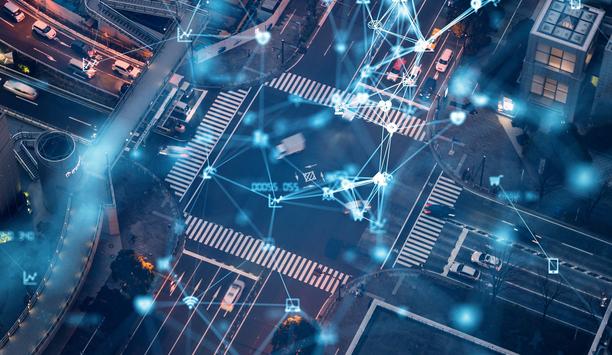
Securing unmanned infrastructure at the network edge
Download
Smart and reliable rail and metro operations
Download
6 questions to ask when choosing a security system
Download
Effective access control for museums and public spaces
Download
Future-proof IP surveillance for harsh environments
Download
Improving city mobility using connected video technology
Download
Charting the path to safe cities
Download
Securing unmanned infrastructure at the network edge
Download
Smart and reliable rail and metro operations
Download

Videos
Public security: Manufacturers & Suppliers

Using artificial intelligence (AI) to automate physical security systems
Download
A modern guide to data loss prevention
Download
7 proven solutions for law enforcement key control and asset management
Download
The truth behind 9 mobile access myths
Download
Access control system planning phase 2
Download






